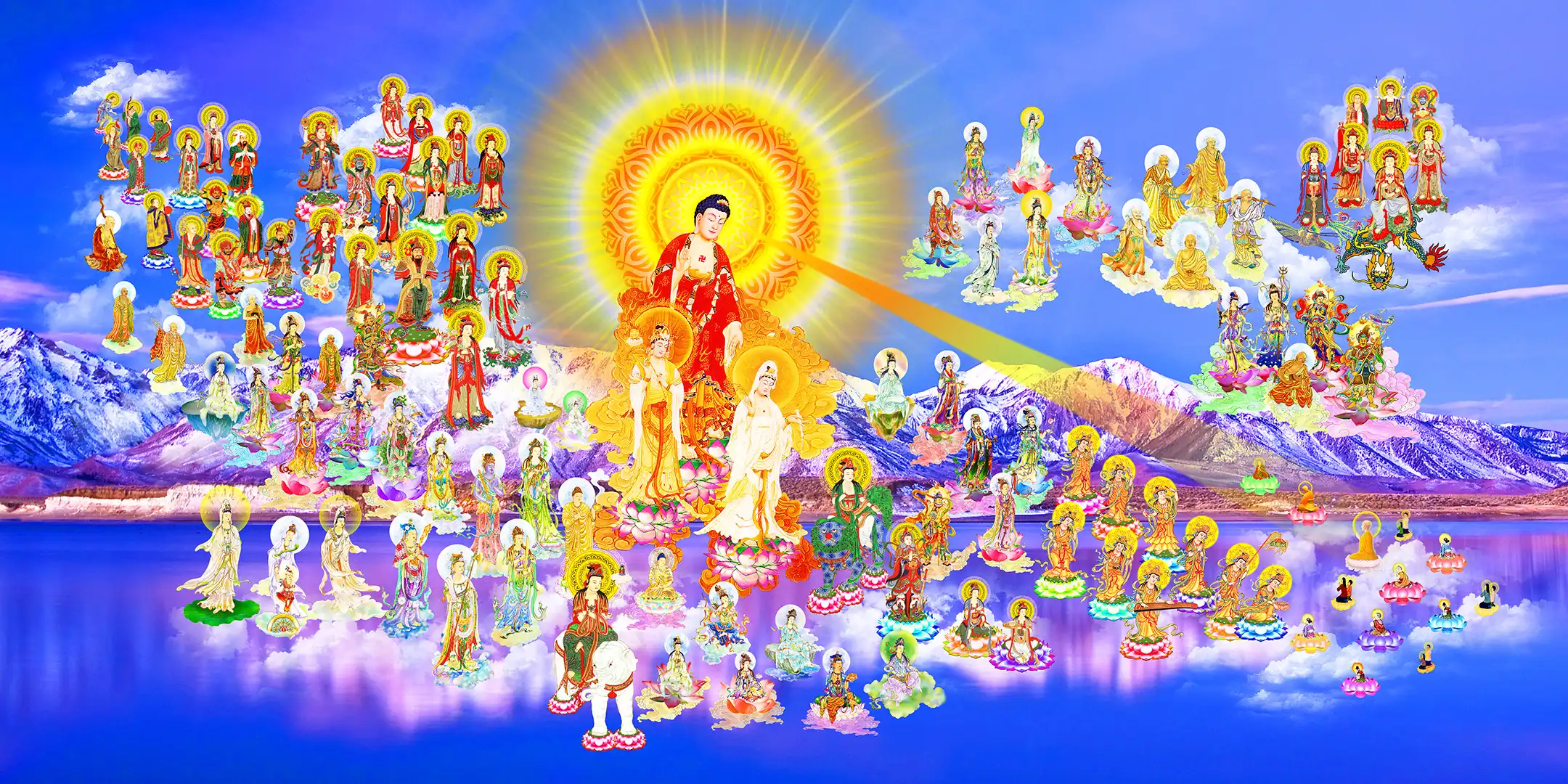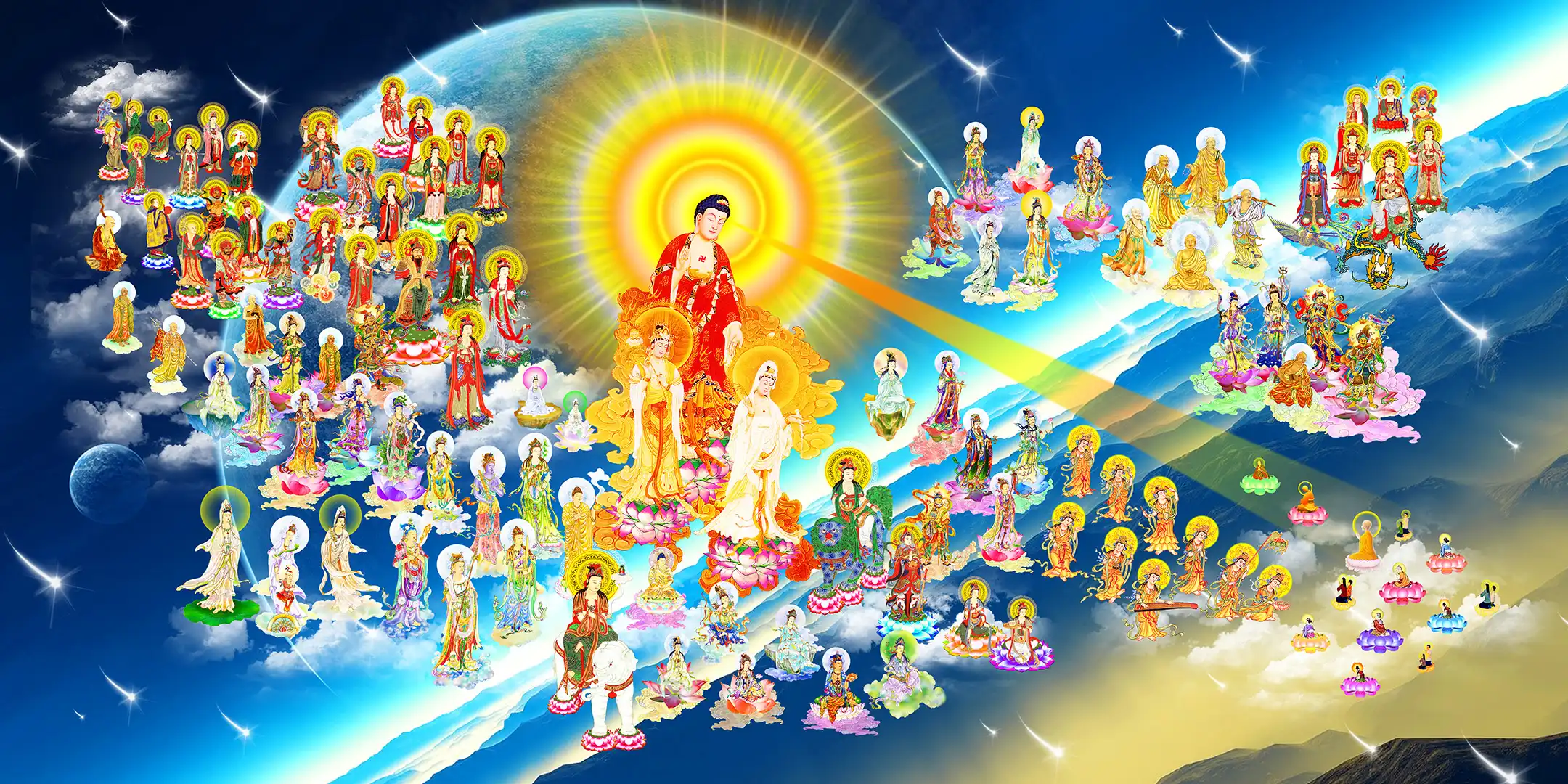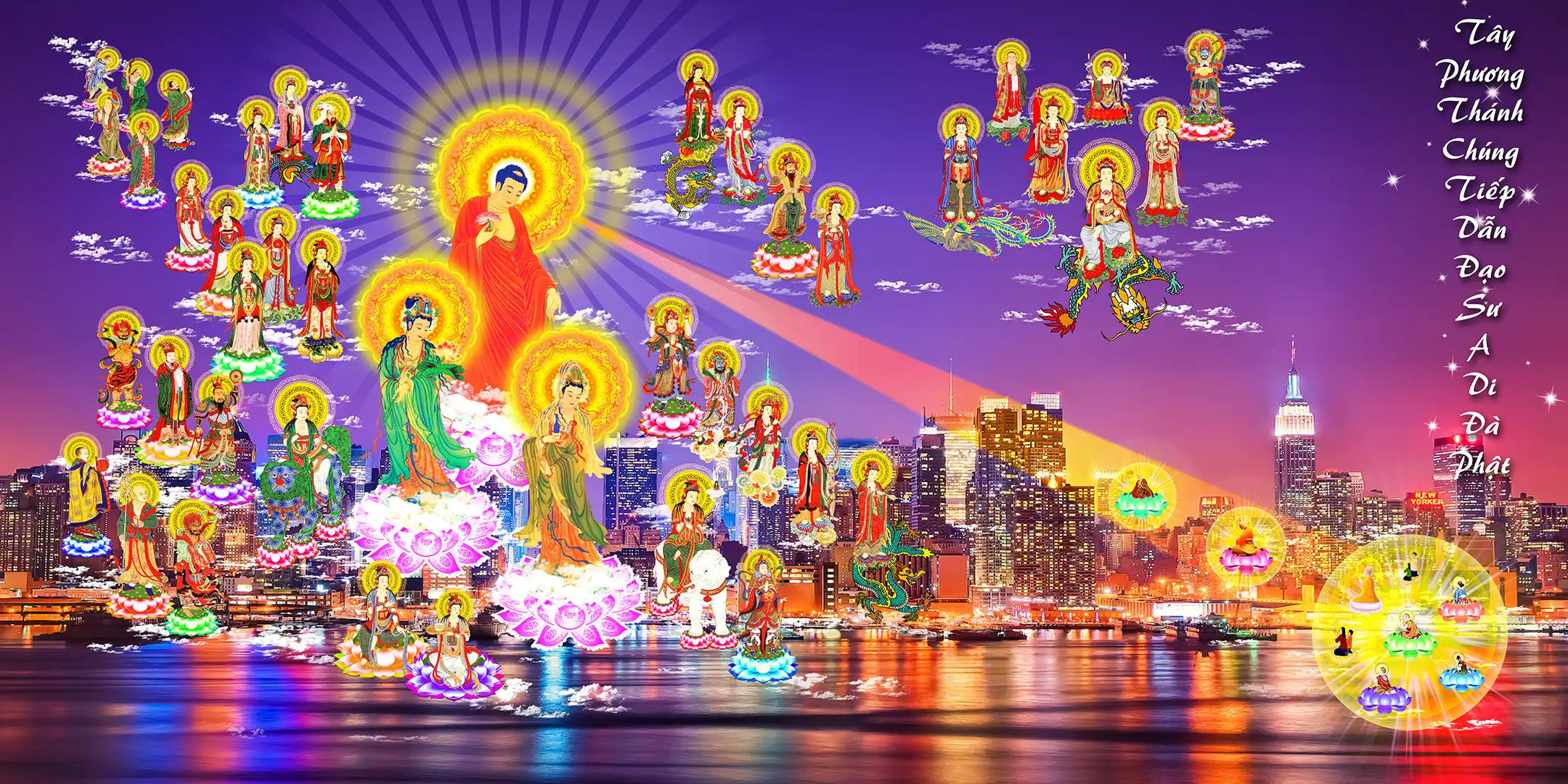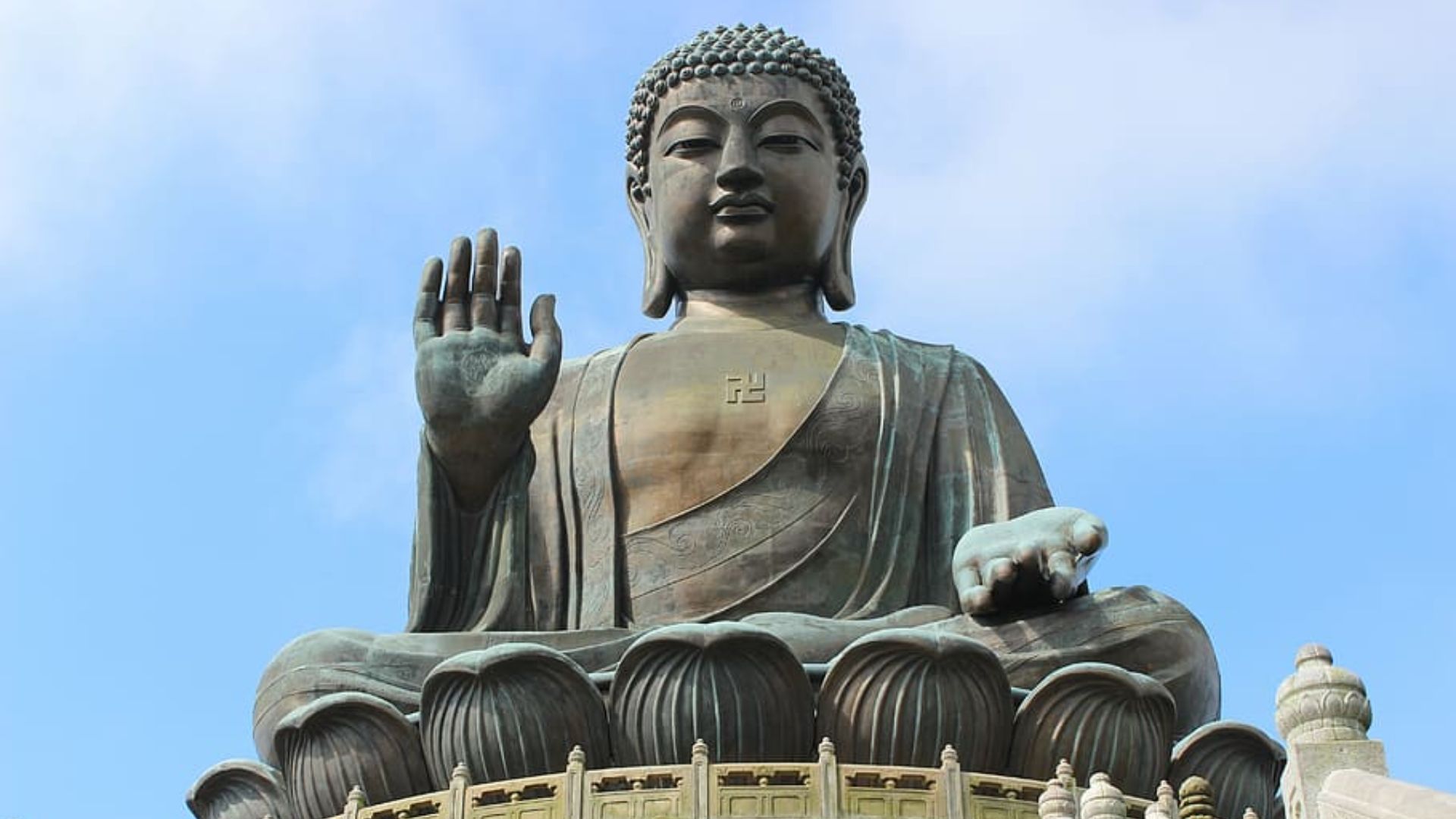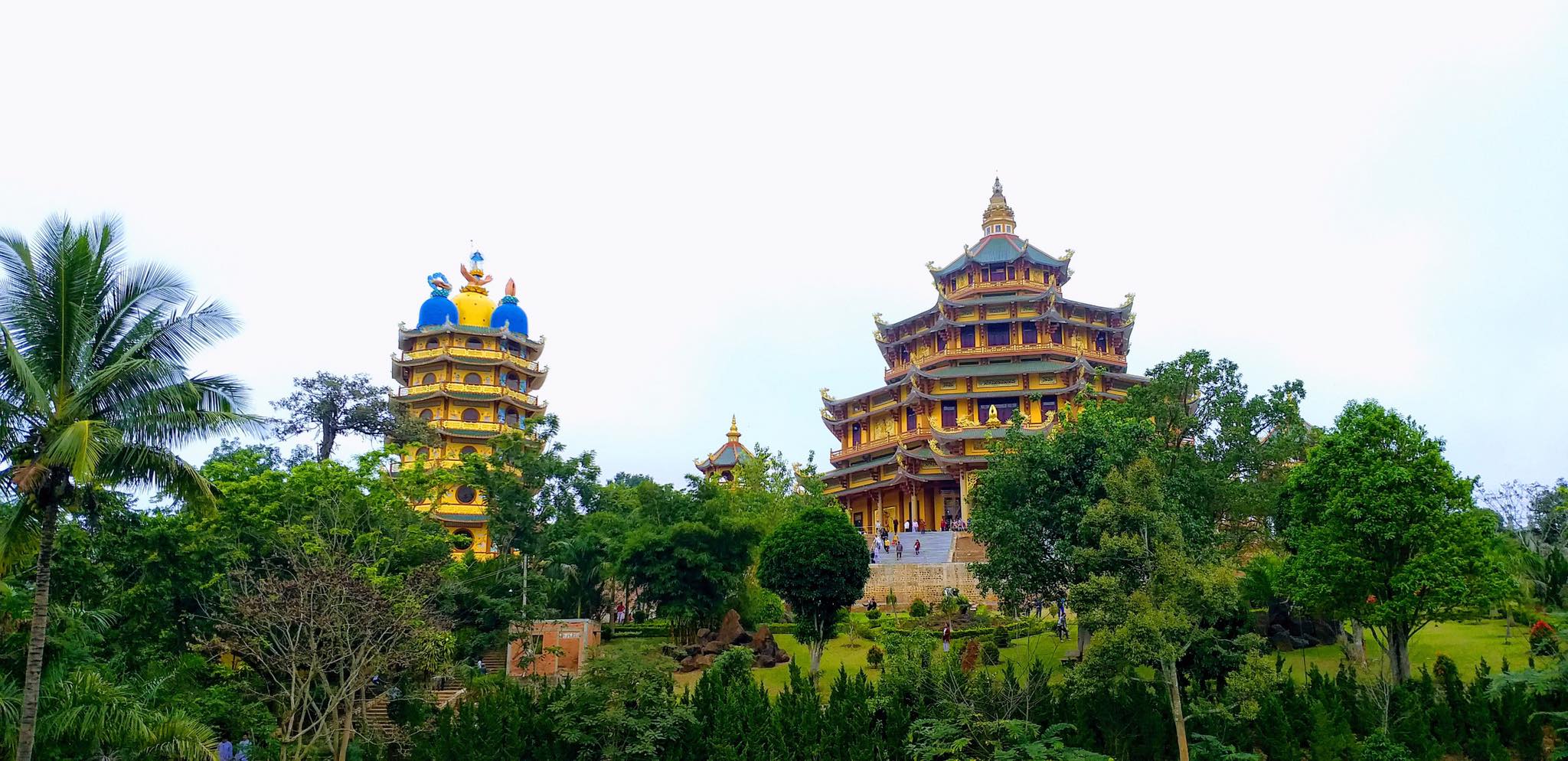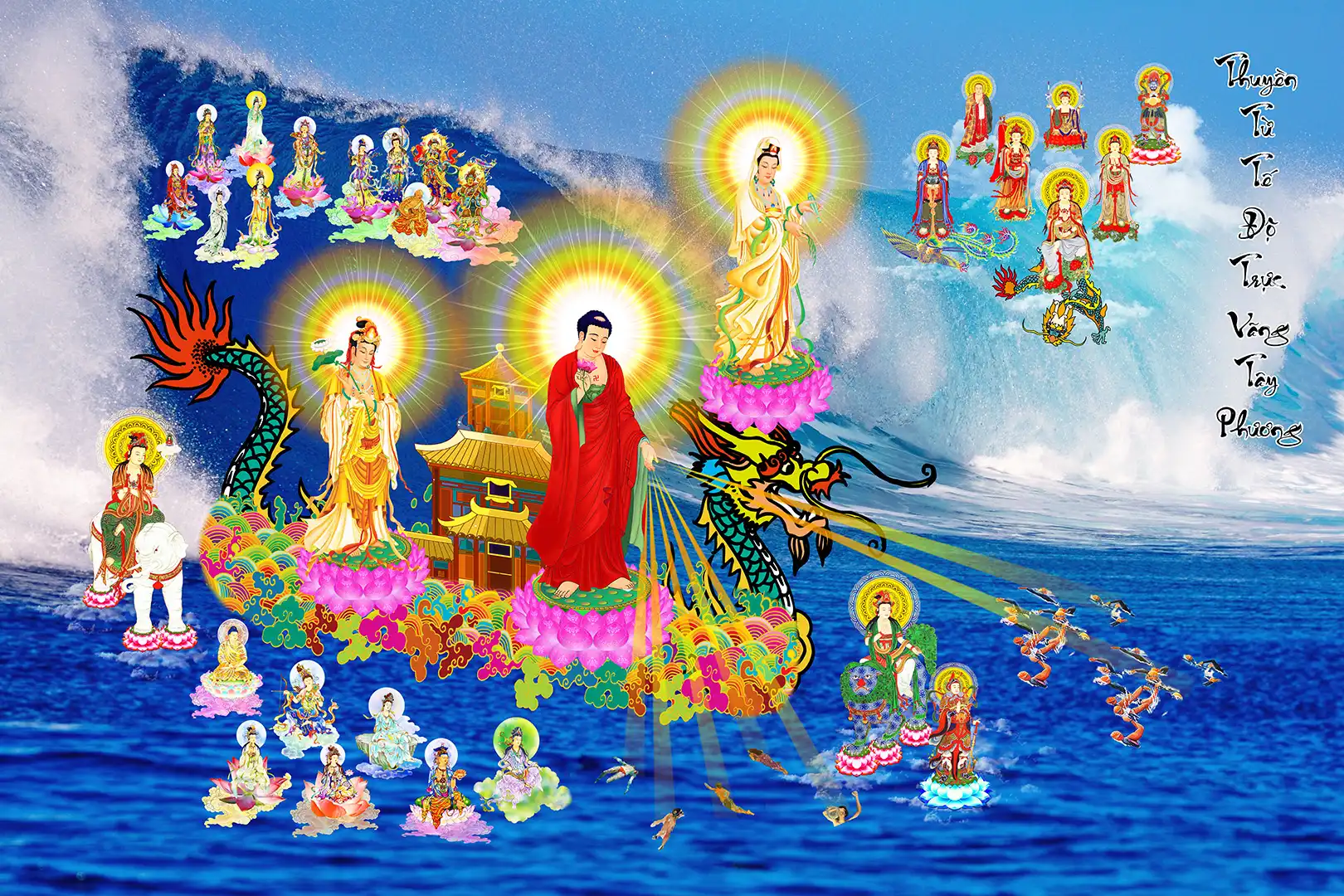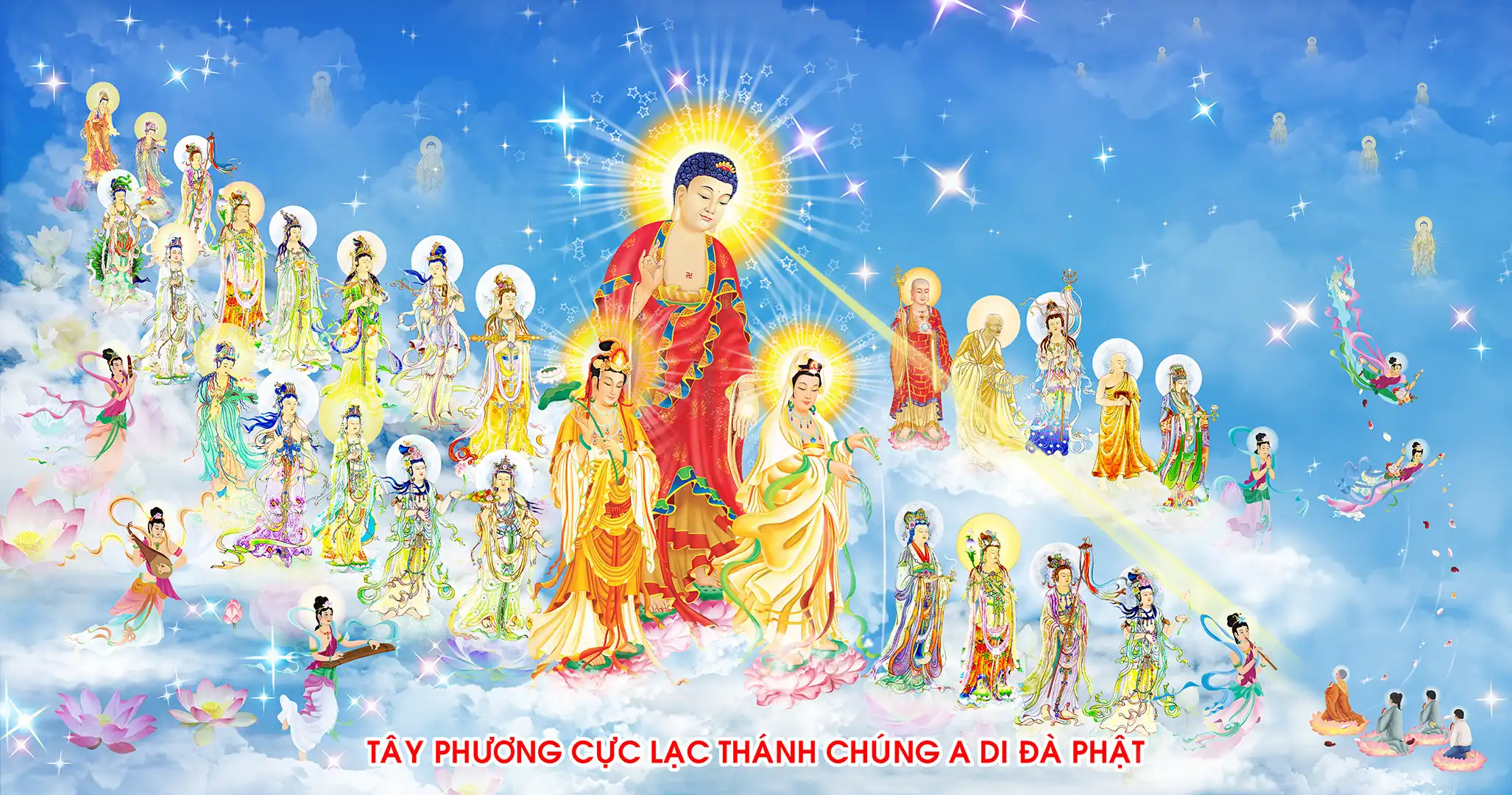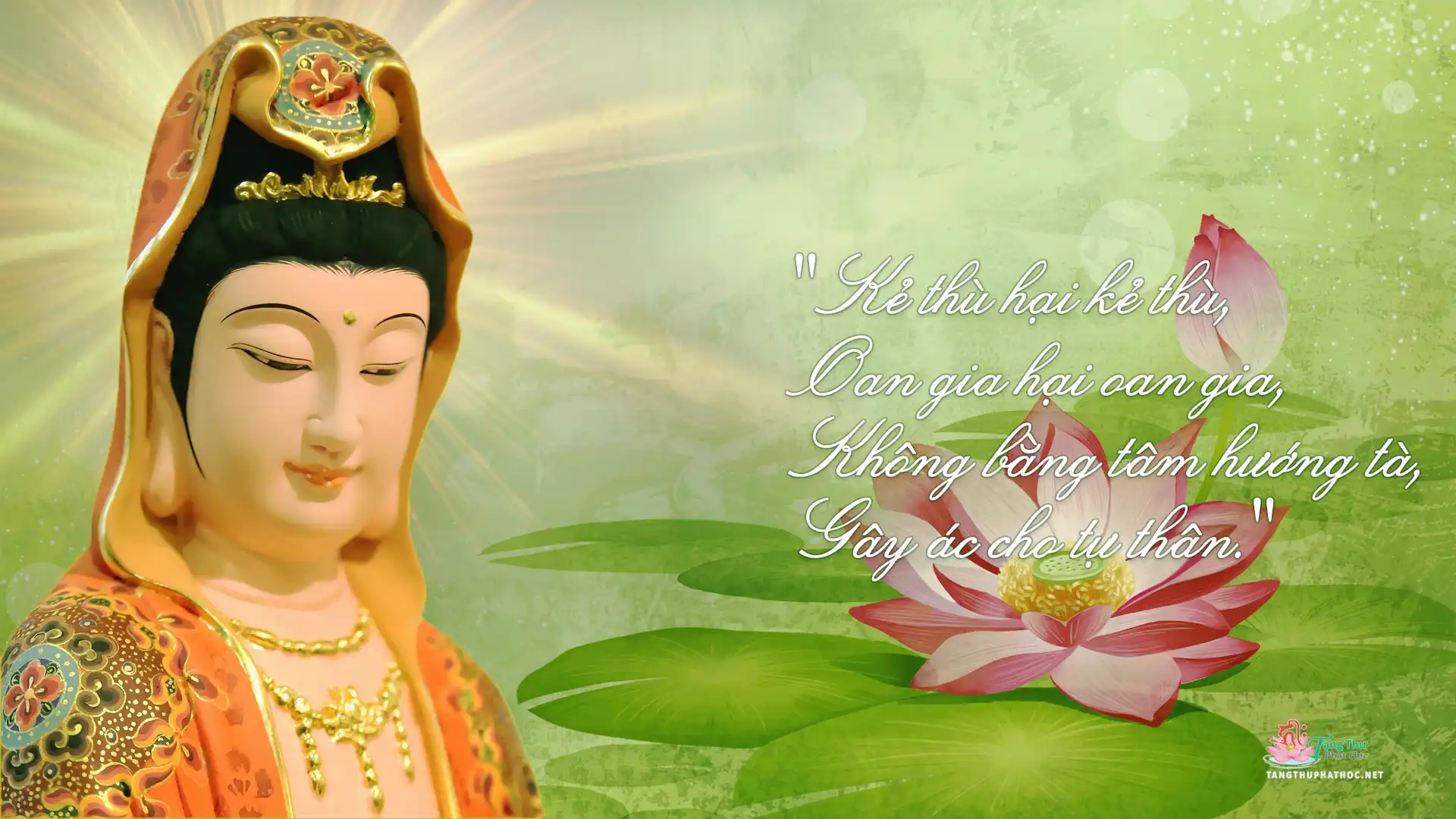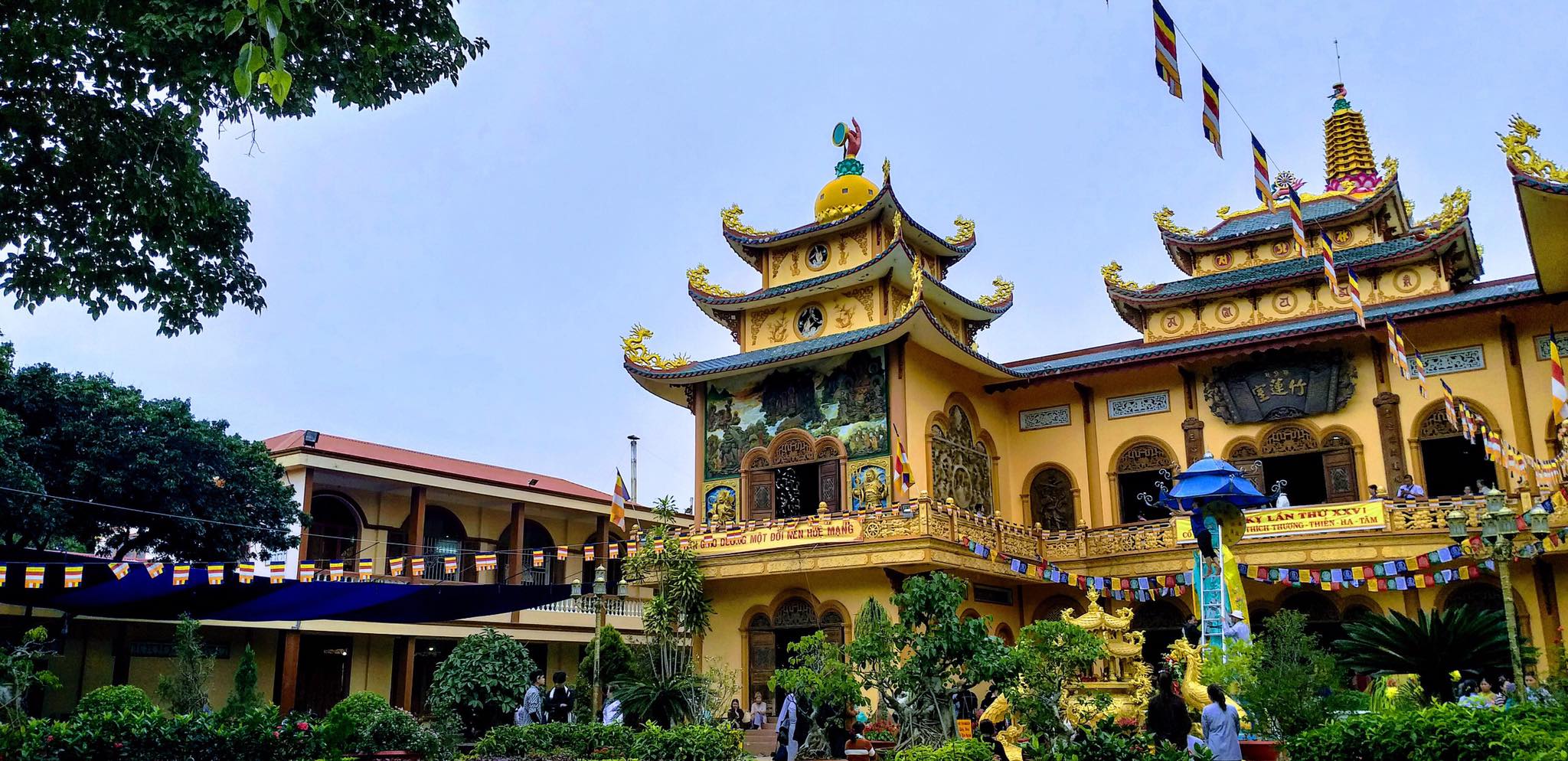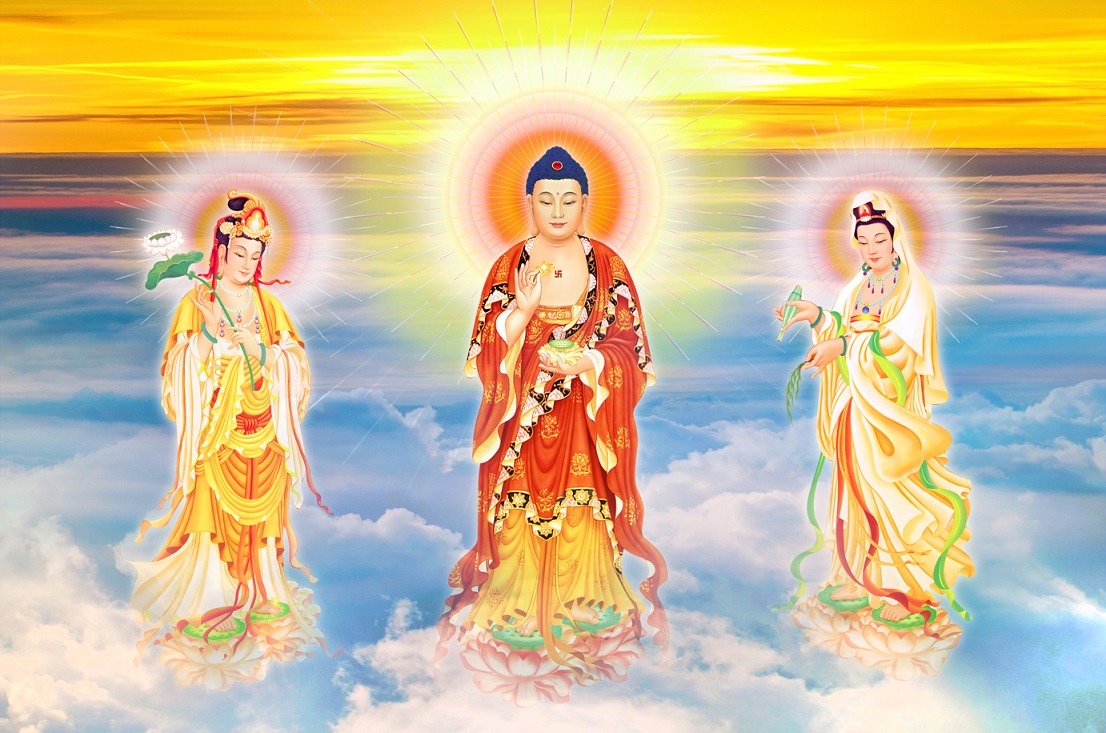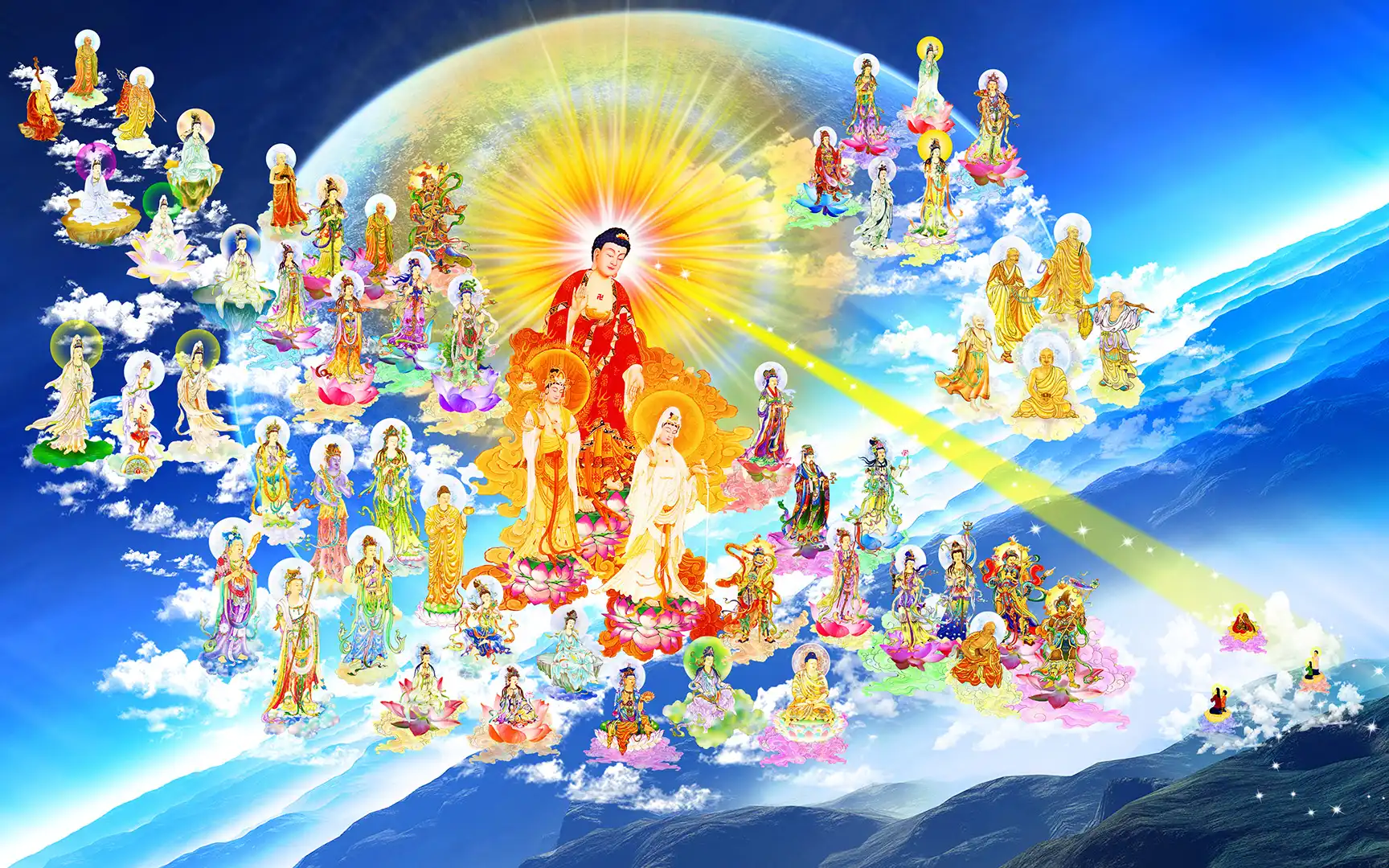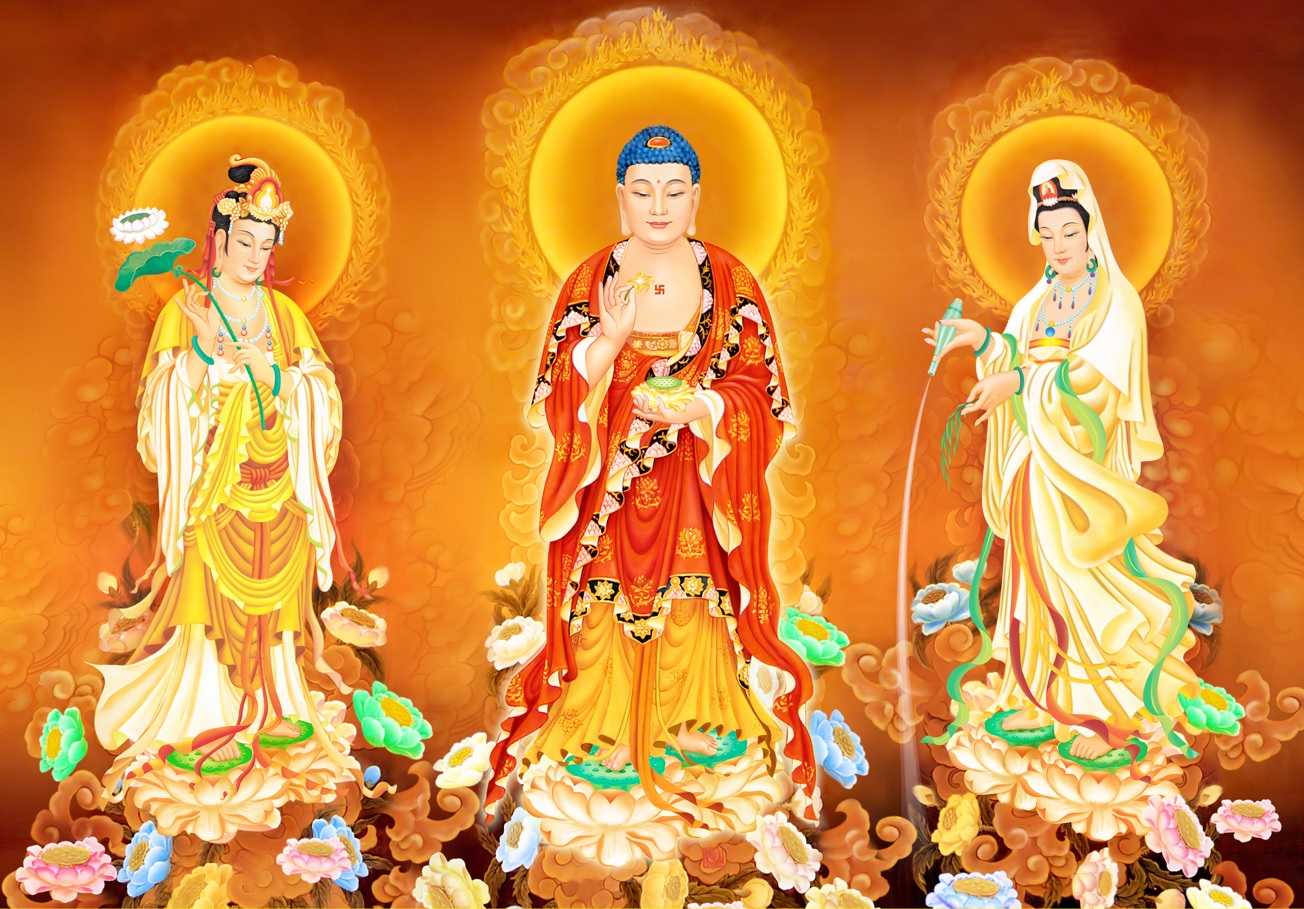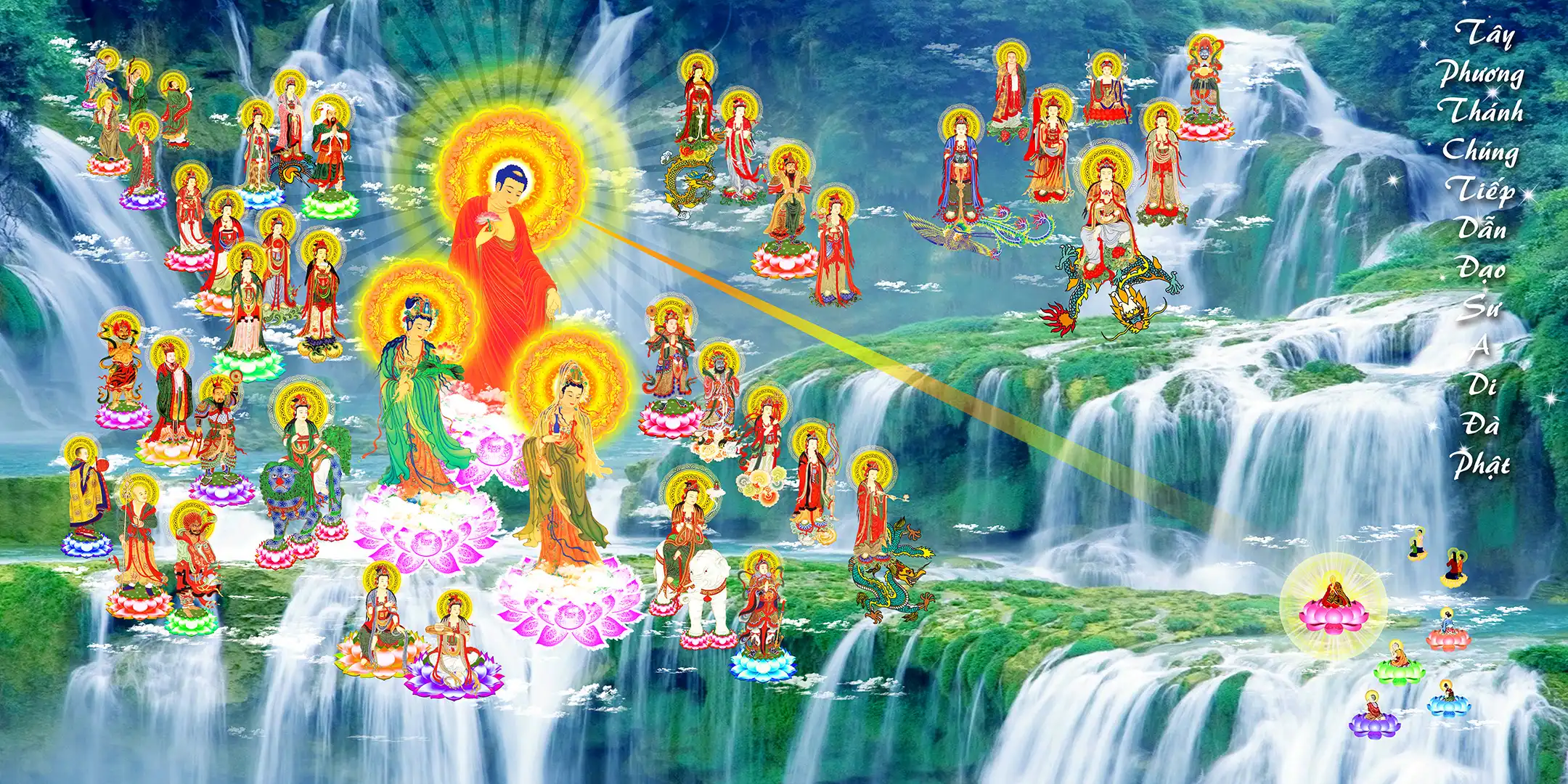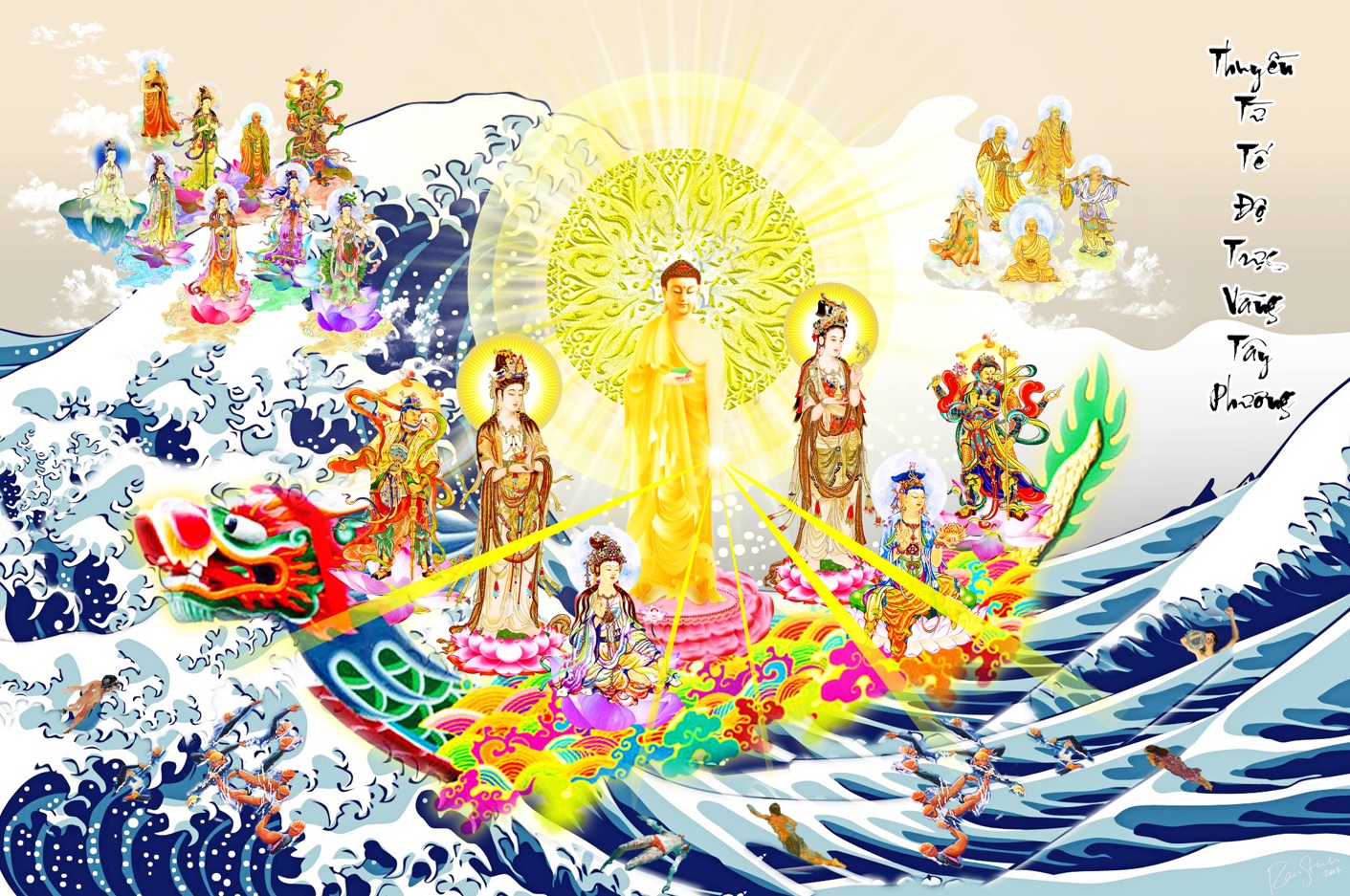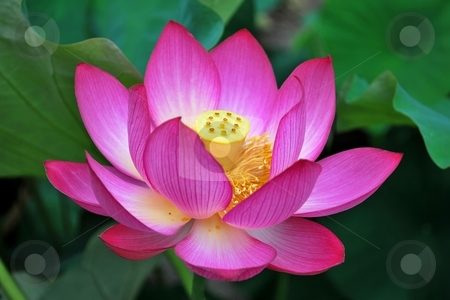COMMON BUDDHIST TEXT:
GUIDANCE AND INSIGHT FROM THE BUDDHA
Chief Editor: Venerable Brahmapundit
Editor: Peter Harvey
Translators: Tamás Agócs, Peter Harvey, Dharmacārī Śraddhāpa, P.D.Premasiri, G.ASomaratne, Venerable Thich Tue Sy
PART II: THE DHAMMA/DHARMA
CHAPTER 3: CHARACTERISTICS OF THE TEACHINGS
THERAVĀDA
The overall nature of the Dhamma
‘Dhamma’ (Pāli, Skt Dharma) is a word with many layers of meaning. As the second of the three focuses of Buddhist devotion (the ‘Three Refuges’: see *Th.93), where it is used in the singular, Dhamma means: the Buddha’s teachings; the realities and principles that these point to as a kind of ‘Basic Pattern’ to things; the path to liberation from suffering that is the main focus of the teachings, and which accords with the nature of reality; and the final culmination of the path, nirvana.
Dhamma can also mean something like ‘virtue’, ‘justice’, ‘the right and proper way’, as when a king is said to rule according to Dhamma, i.e. righteously, ethically. As a term used in the plural, dhamma/dharma can mean: any mental quality, state or thing – its broadest use; an object, real or imaginary, of the mind sense; a principle, truth or reality-pattern (e.g. the four Truths of the Noble Ones (see *L.27 and near the end of *Th.138).
Th.12 Qualities of the Dhamma
The first paragraph of this passage is part of a text that is frequently chanted in Pāli in devotional settings, as well as being reflected on in devotional meditations.
‘Master Gotama, … In what way is Dhamma directly visible (as to is truth and reality), not delayed (in its results), inviting investigation, applicable and onward leading, to be individually understood by the wise?’
‘Brahmin, one excited by attachment, overcome by attachment … wills in a manner leading to the affliction of himself, others and both, and he experiences mental pain and unhappiness. But when attachment is abandoned, and he does not will in a manner leading to the affliction of himself, others and both, he does not experience mental pain and unhappiness. It is in this way that Dhamma is directly visible [The same is then repeated regarding being affected or free of hate or delusion. The next but one sutta then says just the same, except for replacing ‘Dhamma’ with ‘nirvana’.]
Aññatara Brāhmana and Nibbāna Suttas: Aṅguttara-nikāya I.156–157, trans. P.H.
Th.13 Dhamma as profound
In this passage, the Buddha reflects on the profound Dhamma he had experienced at his awakening. He then explains this as two-fold: the process of dependent arising (see passages *Th.156–168), i.e. a sequence of conditions leading to rebirth and the continuation of what is painful, and nirvana as the stopping of all such conditions. Unlike nirvana, conditionality is not something one takes refuge in, but understanding it is part of the Dhamma as path.
This Dhamma that I have attained is profound, hard to see and hard to understand, peaceful, sublime, unattainable by mere reasoning, subtle, to be experienced by the wise. But this population delights in clinging (especially to what is the familiar), enjoys clinging, and rejoices in clinging. It is hard for such a population to see this state, namely, specific conditionality, dependent arising. And it is hard to see this state, namely, the stilling of all volitional constructions, the relinquishing of all acquisitions, the destruction of craving, non-attachment, cessation, nirvana.
Ariya-pariyesanā Sutta: Majjhima-nikāya I.167, trans. P.H.
Reasons for choosing to practise Buddhism
Th.14 The purpose of the holy life
Monks, this holy life is not lived to deceive people, for prattling with people, for the benefit of gain, hospitality and praise, to defend one’s theory, not with the thought ‘Let people know about me’. Monks, the holy life is lived for the purpose of restraint, relinquishment, non-attachment and cessation (of suffering).
Uruvela-vagga Brahmacariya Sutta: Aṅguttara-nikāya II.26, trans. P.D.P.
Attitude to other spiritual traditions
Th.15 The Dhamma is not for converting others but to help them be better people
In this passage, the Buddha speaks to a non-Buddhist wandering ascetic and emphasizes that he wants to help people progress morally and spiritually and not, as such, to gain disciples.[1]
Nigrodha, you may think: ‘The renunciant Gotama says this in order to get pupils.’ But you should not regard it like that. Let him who is your teacher remain your teacher. Or you may think: ‘He wants us to depart from our instructions.’ … ‘He wants to establish us in those things that are unwholesome and reckoned as unwholesome according to our teachers.’ … ‘He wants to draw us away from things that are wholesome and reckoned as wholesome according to our teachers.’ But you should not regard it like that. Let whatever is wholesome and reckoned as wholesome according to your teachers remain the same. Nigrodha, I do not speak for any of these reasons.
There are Nigrodha, unwholesome things that have not been abandoned, defiling, conducive to rebirth, distressful, productive of painful results, associated with future birth decay and death. It is for the abandonment of these things that I expound the teaching. If you practise accordingly, the defiling things will be abandoned, and the things that make for purification will grow, and you will attain to and dwell, in this very life, in the fullness of insight and perfection, having realized it directly by your own higher knowledge.’
Udumbarika-sīhanāda Sutta: Dīgha-nikāya III.56–57, trans. P.D.P.
Disputes and tolerance
Th.16 The Buddha’s advice to his disciples on how to respond to criticisms and accusations This passage counsels calm assessment of any criticism or praise directed at the Buddha, Dhamma or Sangha (Buddhist community).
‘Monks, if others should speak in dispraise of me, of the Dhamma, or of the Sangha, you should not then either bear malice, or become unhappy, or feel depressed in mind. If you then feel angry and displeased, it would be a danger to you yourself. If others speak in dispraise of me, of the Dhamma, or of the Sangha, and you then feel angry, and displeased, would you be able to know whether what others have spoken has been well-spoken or ill-spoken?’ ‘That would not be so, sir.’ ‘But when others speak in dispraise of me, or of the Dhamma, or of the Sangha, you should unravel what is contrary to fact as contrary to fact, pointing out “it is not in accordance with fact, it is not like that, this (fault) is not found in us”.
Monks, if others should speak in praise of me, in praise of the Dhamma in praise of the Sangha, then you should not feel delighted, happy, or elated in mind … That would be damaging to you yourself. When others speak in praise of me, or of the Dhamma, or of the Sangha, you should acknowledge what is factual as factual, saying, “this is in accordance with fact, it is like this, this (quality) is found in us”.’
Brahma-jāla Sutta: Dīgha-nikāya I.2–3, trans. P.D.P.
Th.17 The causal origin of disputes
In this passage, the Buddha says that he disputes with no-one (cf. *M.19), and that disputes arise due to fixed concepts that arise from how one mentally processes and elaborates on what one perceives.
The Sakyan Daṇḍapāṇi … approached … where the Blessed One was seated, exchanged friendly greetings, and stood on one side leaning on a stick. He said thus: ‘What theory does the renunciant hold, and what does he expound?’
‘The theory I hold is such that in the case of a brahmin[2] (like myself) living without being fettered by sensual desires, free from perplexity, with worry cut off, craving for various kinds of existence abandoned, and for whom conceptions[3] do not lie latent, he stays without disputing with anyone in this world consisting of gods, māras, brahmās, renunciants, brahmins, deities and humans. Brother, I hold such a theory and so do I expound.’
When this was said, the Sakyan Daṇḍapāṇi shook his head, put out his tongue, and showing (creases like) three forks on his forehead, went away leaning on his stick. …
… [Later the Buddha reported this conversation to some of his monks.] Then a certain monk said to the Blessed One: ‘Holding what theory does the Blessed One stay without disputing with anyone in this world consisting of gods, māras, brahmās … and how sir, is it that conceptions do not lie latent in the Blessed One who is living without being fettered by sensual desires …?’
The Blessed One said: ‘Monk, on whatever account reckonings in terms of conceptual obsession[4] overwhelm a person, if (for him) there is nothing in it to delight in, nothing to welcome, nothing to cleave to, then that itself is the end of latent tendencies to attachment, aversion, dogmatic beliefs, doubt, conceit, to attachment to ways of being, ignorance, the end of the latent tendency to take up sticks and weapons, to fights, quarrels, disputes, accusations, slanders and lies. Here, all these evil unwholesome states cease without remainder.’
The Blessed One said this, and getting up from the seat entered the monastery. Soon after the Blessed One had gone to the monastery it occurred to those monks, ‘The Blessed One pointed out the teaching in brief to us and left without explaining its meaning in detail … Venerable Mahā-kaccāna is capable of explaining it to us in detail.’ Then the monks approached Venerable Mahā-kaccāna and requested him: ‘Venerable Mahā-kaccāna, please explain it.’
Venerable Mahā-kaccāna explained as follows: ‘Friends, on account of eye and visible forms, arises visual consciousness. The coming together of the three is (sensory) contact. On account of contact, feeling arises. What one feels is conceptualized and what is conceptualized is thought about. Regarding what is thought about, one engages in obsessive proliferation of thought. On account of that, reckoning in terms of conceptual obsession overwhelms a person in respect of past, future and present forms discernible by the visual sense. [The same is then repeated regarding the interaction that takes place between the other sense faculties and their corresponding stimuli; this includes the mind and mental objects.]’
Madhupiṇḍika Sutta: Majjhima-nikāya I.108–112, trans. P.D.P.
Th.18 How quarrels arise
This passage emphasizes how clinging to possessions leads to quarrels.
Now, in this case Ānanda, craving is dependent on feeling, seeking is dependent on craving, gain is dependent on seeking, deciding (what to do with what has been gained) is dependent on gain, desire and attachment is dependent on deciding, excessive attachment is dependent on desire and attachment, acquisitiveness is dependent on excessive attachment, miserliness is dependent on acquisitiveness, protectiveness is dependent on miserliness, and because of protectiveness various evil unwholesome phenomena come into being such as the taking up of sticks and sharp weapons, fights, quarrels, disputes, accusations, slanders and lies.
Mahā-nidāna Sutta: Dīgha-nikāya II.59, trans. P.D.P.
Th.19 Dogmatic clinging to views as a source of disputes
The following verses come from four discourses from a section of the Sutta-nipāta called the Aṭṭhaka-vagga. This section is a very early Buddhist text, as shown by its being quoted in several other early texts. It particularly emphasizes non-attachment to views and opinions.
Some speak with an evil mind while others speak intent on truth. A sage does not enter into a dispute that has arisen. Therefore, nowhere has he an obstruction.
How could someone go beyond a dogmatic view[5] of his own that he has entered into with desire and preference? He would speak according to his understanding.
For whomsoever there are dogmatic views esteemed but impure, reached by speculation and so constructed, whatever he sees as advantageous to himself, clinging to it, there is (to him) a calm dependent on what is unstable.
To the purified one, no views based on speculation are to be found with regard to different forms of existence. Having abandoned both hypocrisy and pride, by what would he be led (into the cycle of rebirth)? For, unattached is he.
One who is attached enters into disputes regarding theories. Why and on account of what would one assert (a theory) when one is unattached? He has nothing taken up or laid down. Here itself he has purified all dogmatic views.
They say: ‘Only this is pure, there is no purity in other doctrines.’ Speaking about the excellence of whatever they are attached to, they are separately established in individual truths.187
Having plunged into a crowd desiring a dispute, they call one another fools. They engage in contentious talk clinging to different opinions, being desirous of praise, calling themselves skilled people.
One who imagines in terms of being equal, superior or inferior, on that account comes to dispute. For one who is not stirred by these three ways (the thought) ‘I’m equal or superior’ does not occur.
What would the brahmin say is the truth? Or on what account would he dispute saying ‘it is false’? In whom there is no (sense of) being equal or unequal, on what account would he dispute?
To one who is detached from (fixed) perceptions there are no bonds. To one who is released through insight there are no delusions. Whoever grasped (fixed) perceptions and dogmatic views, they wander in the world coming to dispute.
Clinging to their own view, the skilled ones (experts) come to dispute and affirm diverse theories. ‘He who knows thus understands the doctrine, and those who revile this are imperfect’ (they say).
In this manner too they quarrel and debate, and say that the other person is a fool unskilled. Which indeed among them is the true theory? They all speak as skilled people.
If one who is not agreeing with another person’s doctrine becomes a fool, a beast, and one of inferior wisdom, then really all are fools and of much inferior wisdom. For, all of them cling to dogmatic views.
If by virtue of one’s own view one becomes pure, of purified insight, skilled and knowledgeable then none among them is lacking in wisdom. For, they too are possessed of conclusively grasped views.
Still, I do not say that what the fools separately declare among themselves is the reality. Each one of them makes their own dogmatic view true. That is why they consider another as a fool.
What some say is true or real, others say is mean and false. In this manner too, they quarrel and dispute. Therefore, renunciants do not declare a uniform truth.
There is one truth and there is not a second, with regard to which (one truth) people who understand do not come into dispute. Renunciants esteem diverse truths of their own. That is why they do not declare a uniform truth.[6]
Why indeed do they who claim to be skilled ones, they who propound theories speak of diverse truths? Is it indeed the case that there are many and diverse truths? Or is it the case that they are just following the course of their logical reasoning?
There surely are not many and diverse eternal truths in the world apart from perceptual interpretations. [7] They engage in speculative reason in respect of dogmatic views and declare of two teachings, ‘true’ and ‘false’.
The Duṭṭhaṭṭhaka, Pasūra, Māgandhiya and Cūḷa-viyūha Suttas: Sutta-nipāta 780–787, 824–825, 842–847, 878–886, trans. P.D.P.
Th.20 The parable of the blind men and the elephant, and the ‘undetermined issues’
This passage introduces a set of ten views on what are known as the undetermined or undeclared (avyākata) issues (see *Th.10 and section introduction before this). This was because the Buddha set them aside without answering them, as answering them was irrelevant to attaining liberation from suffering and led to pointless quarrelling. Those who hold such views are portrayed as having fixed on only one limited facet of reality, which they perceived only partially, and then over-generalised from this. In another passage (Majjhima–nikāya I.428– 431), where a monk says that he will abandon being a monk unless the Buddha gives answers on the ten undeclared issues, the Buddha says he had never promised to give answers to these questions, and likens the monk to someone shot by a poisoned arrow refusing medical treatment until he knows everything about who shot it and about the composition of the arrow.
‘Sir, here in Sāvatthī live many renunciants, brahmins and wandering ascetics who pursue other teachings, and are holding various views, having various preferences, having various likes, having dependence on various forms of dogmatic clinging. The views of these renunciants and brahmins include:
The world is eternal: this alone is true and everything else is false.
The world is non-eternal: this alone is true and everything else is false.
The world is finite: this alone is true and everything else is false.
The world is infinite: this alone is true and everything else is false.
The life principle is the same as the mortal body: this alone is true and everything else is false. The life principle is different from the mortal body: this alone is true and everything else is false.
After death, the Tathāgata[8] is: this alone is true and everything else is false.
After death, the Tathāgata is not: this alone is true and everything else is false.
After death, the Tathāgata both is and is not: this alone is true and everything else is false.
After death, the Tathāgata neither is nor is not: this alone is true and everything else is false.
They live piercing each other with sharp dagger-like words disputing, and quarrelling saying
“Reality is like this and not like that; reality is not like that but it is like this”.’
‘Monks, the wandering ascetics who pursue other teachings are blind and lacking in vision. They do not know what is beneficial and non-beneficial. They do not know the reality and unreality. Not knowing the reality and unreality, they live piercing each other with sharp dagger-like words … In the past, monks, there was a certain king in Sāvatthī. Then that king called a certain person and told him: “Friend, come here. Assemble all the people in Sāvatthī who were blind from birth in one place.” He said “Alright, Lord” to the king in response and, taking everyone born blind in Sāvatthī, went to that king and said to him: “Lord, I have made all those born blind in Sāvatthī to assemble.”
“If so friend, present an elephant to these people born blind.” He said: “Alright, Lord” and presented the elephant to the people born blind. Saying “the elephant is like this”, he presented the elephant’s head to some … the ear to some … the tusk to some … the trunk to some … the body to some … the foot to some … the thigh to some … the tail to some and the tail-end to some …
He went to the king and said “Lord, an elephant has been observed by these people born blind. It’s the king’s turn now.”
Monks, then that king went to those people born blind and asked: “Have you people born blind observed an elephant?” “Yes Lord, we have observed an elephant.” “If so, you people born blind, say what an elephant is like.”
Those … who had felt the head of the elephant said, “The elephant is like a pot”. Those … who had felt the elephant’s ear said, “The elephant is like a winnowing basket”. Those … who had felt the elephant’s tusk said, “The elephant is like a ploughshare”. Those … who had felt the elephant’s body said, “The elephant is like a storehouse”. Those … who had felt the elephant’s leg said, “The elephant is like a pillar”. Those … who had felt the elephant’s thigh said, “The elephant is like a mortar”. Those … who had felt the elephant’s tail said, “The elephant is like a pestle”. Those … who had felt the elephant’s tail-end said, “The elephant is like a broom”. They, saying the elephant is like this and not like that … fought each other with their fists. The king was amused at that.
In the same way monks, the wandering ascetics who pursue other teachings are blind and lacking in vision … They live piercing each other with sharp dagger-like words disputing, and quarrelling … .’
Paṭhama-nānātitthiya Sutta: Udāna 67–69, trans. P.D.P.
The teachings as having a practical focus
Th.21 The Buddha as teaching what he knew to be both true and spiritually useful
When teaching someone, the Buddha selected, from what he knew to be true, what he saw as spiritually useful for the person to hear, whether or not they found it agreeable.
So, too, prince, such speech as the Tathāgata knows to be not fact, not true, not connected with the goal, and which is unwelcome and disagreeable to others: such speech the Tathāgata does not utter. Such speech as the Tathāgata knows to be fact, true, but not connected with the goal, and which is unwelcome and disagreeable to others: such speech the Tathāgata does not utter. Such speech as the Tathāgata knows to be fact, true, connected with the goal, and which is unwelcome and disagreeable to others: the Tathāgata knows the time to use such speech. … [These three formulations are then repeated with ‘which is welcome and agreeable to others’ in place of ‘which is unwelcome and disagreeable to others’.] Why is that? Because the Tathāgata has compassion for beings.
Abhaya-rājakumāra Sutta: Majjhima-nikāya I.395, trans. P.H.
Th.22 The right and wrong grasp of the teaching
In this passage, the Buddha responds to a monk who claims that attachment to sensual pleasures poses no danger, seeing him as a fault-finding person intent only on trumpeting his own view, not using the teachings appropriately.
Monks, here some foolish men learn the Dhamma … but having learnt it, do not closely examine the meaning of those teachings with insight. When they do not closely examine the meaning of those teachings, the teachings have no appeal to them when they contemplate them. They learn the Dhamma for the advantage of fault finding or for the advantage of defending their theory. For whatever purpose they should learn it, they do not have that purpose fulfilled. Those teachings wrongly grasped by them will conduce to their harm and suffering for a long time. Just as a man needing a snake, looking for a snake, wandering in search of one, would see a large snake and take hold of it by the coils or the tail. That snake would then turn round and bite the hand or arm or any other limb. On account of this he would meet with death or deadly suffering. What is the reason for this? It is because of his wrong grasp of the snake.
Alagaddūpama Sutta: Majjhima-nikāya I.133–134, trans. P.D.P.
Th.23 The Dhamma is for crossing over but not for clinging to
This passage explains that the Dhamma – Buddhist teachings, practices and the states of mind they lead to – are to reach the ‘further shore’ that is nirvana, beyond suffering, and are not to be clung to with attachment and dogmatism. One needs to cultivate good states of mind without attachment to them.
Monks, I will show you how the Dhamma is comparable to a raft, being for the purpose of crossing over but not for the purpose of grasping. Listen to it and bear it in mind well. Just as a man who has come to the highway would see a large stretch of water, (of which) the near shore is insecure and fearful, and the further shore secure and without fear. There is no ship, boat or bridge to cross over from the near shore to the further shore. It occurs to him thus: ‘What if I build a raft by collecting grass, sticks, branches and creeper?’ So he built a raft by collecting grass, sticks, branches and creepers and, making effort with hands and feet, reached the other shore safely. Then to the one who has crossed over this thought occurred: ‘This raft was of great service to me. I safely crossed over to the other shore depending on it, putting forth effort with my hands and feet. What if I mount it on my head or haul it on my back and go where I like?’ Monks, is he doing the right thing if he does so with the raft? And doing what, will he be doing the right thing with the raft?
Monks, to the man who has crossed over this thought might occur: ‘This raft was of great service to me, I safely crossed over to the other shore depending on it and putting forth effort with my hands and feet. What if I pulled it up to dry ground, or sunk it in the water and go where I like?’ A man doing that would be doing the right thing. Just so, monks, my Dhamma is comparable to a raft, for the purpose of crossing over and not for grasping hold of. Even good states should be let go of by those who understand. How much so bad states?
Alagaddūpama Sutta: Majjhima-nikāya I.134–135, trans. P.D.P.
Th.24 Put good teachings into practice, rather than learning many unhelpful things
Although reciting many sacred texts, the heedless one who does not act accordingly is like a cowherd counting only others’ cattle: such a one does not partake in the renunciant life. Better than a thousand verses of meaningless words is one word of a verse, hearing which one is calmed.
Dhammapada 19 and 101, trans. P.H.
The way to liberating knowledge
Th.25 Direct experience as more reliable than tradition or reasoning
The first passage here is part of a critique of various grounds as a basis for living a satisfactory religious life. The first ground is reliance on a teacher who said he has uninterrupted omniscience, yet who meets with unanticipated misfortunes, which he then explains away by saying ‘It was destined to be like that’. The quoted part of the passage critiques reliance on an authoritative traditional teaching, or on speculative reasoning. In the second passage, the Buddha emphasizes that his knowledge is from direct experience, which in his teaching comes from the great calm and mindfulness of meditation.
Sandaka, some teacher here is one who depends on hearing systematically transmitted sacred teachings. He is one who takes to be true what is heard as systematically transmitted sacred teachings. He teaches a doctrine based on hearing systematically transmitted sacred teachings handed down through generations in the form ‘so it was said’, ‘so it was said’, in accordance with sacred collections of traditional teachings. But for one who depends on hearing systematically transmitted sacred teachings … he may have remembered it well or not remembered it well. Furthermore, it may be in accordance with fact and it may be otherwise … This, Sandaka, is the second unsatisfactory form of religious life declared by the perfectly awakened Buddha, the arahant who knows and sees. And on this basis an intelligent person would not live a religious life, and if he lives one he would not gain a right approach, a wholesome state.
And again, Sandaka, some teacher here is a rationalist and investigator. He teaches a doctrine based on what is self-evident to him, beaten out by logic and resorting to investigation. In the case of a rationalist and investigator, there is what is well-reasoned and there is what is ill-reasoned. It may also be in accordance with fact and it may also be otherwise … (As just described) this, Sandaka, is the third unsatisfactory form of religious life declared by the perfectly awakened Buddha …
Sandaka Sutta: Majjhima-nikāya I.520, trans. P.D.P.
There are, Bhāradvāja, some renunciants and brahmins who … on the basis of systematically transmitted sacred teachings claim … to have attained here and now perfection in ultimate higher knowledge, like, for instance, the brahmins who profess (knowledge of) the three Vedas.[9] There are some renunciants and brahmins who … are rationalists and investigators. There are (also) those who … have by themselves experienced higher knowledge of Dhamma and claim … perfection in ultimate higher knowledge. Bhāradvāja, I am one of them.
Saṅgārava Sutta: Majjhima-nikāya II.211, trans. P.D.P.
Th.26 Unreliable grounds for knowledge and ethical guidance
This passage emphasizes testing teachings against one’s own experience, rather than accepting them simply based on tradition, reasoning, or being impressed by, or allegiance to, a particular teacher. One should personally assess the moral fruits of particular teachings. The focus here is not on the propositional content that a teaching may include, but the mind-states it encourages, and the moral fruits it produces – though the states of delusion and its opposite are relevant to propositional content.
The Kesaputtiya Kālāmas spoke thus to the Blessed One: ‘Sir, there are some renunciants and brahmins who come to Kesaputta. They expound and illumine their own theory. They despise, revile, speak contemptuously of, and insult the theories of others. Other renunciants and brahmins also come to Kesaputta and do the same. Sir, to us there is doubt; there is indeed perplexity as to who among these venerable renunciants and brahmins speaks the truth and who speaks falsehood.’
[The Buddha:] ‘It is fit for you to be in doubt, to be perplexed. For, perplexity has arisen to you in a situation where doubt ought to be. Come O Kālāmas, do not depend on hearing systematically transmitted sacred teachings, successive traditions, hearsay, a body of scriptural collections, speculative reasoning, inferential reasoning, reasoned cogitation, the reflective acceptance of a view, the seeming capability (of someone), or on (the idea that) “( this) renunciant is our venerated teacher”.
When Kālāmas, you know for yourselves: “These things are unwholesome, these things are blameworthy, these things are censured by the wise, when these things are adopted and practised they conduce to harm and suffering”, then Kālāmas you may abandon them.
Kālāmas, is the arising of greed within a person for his welfare or not?’ ‘Venerable sir, it is not for his welfare.’ ‘Kālāmas, a greedy person with a mind obsessed by greed, destroys living things, takes what is not given, commits adultery, tells lies, and incites others to do the same, conducing to harm and suffering for a long time.’ ‘Yes, venerable sir.’ [The same is then said of hatred and delusion.]
‘Kālāmas, are these things wholesome or unwholesome?’ ‘Venerable sir, they are unwholesome.’ ‘Are they blameworthy or not blameworthy?’ ‘Blameworthy, venerable sir.’ ‘Are they censured or praised by the wise?’ ‘Censured, venerable sir.’ ‘Undertaken and practised, do they lead to harm and suffering or not, how is it in this case?’ ‘Undertaken and practised, these things lead to harm and suffering. So it is for us in this case.’ … [The passage goes on to recommend non-greed (i.e. anti-greed, generosity), non-hate (loving kindness) and non-delusion (clarity of mind, wisdom) as things that one can know for oneself as wholesome and as leading to welfare and happiness.]
Kesaputta (or Kālāma) Sutta: Aṅguttara-nikāya I.188–189, trans. P.D.P. and P.H.
Th.27 Belief is not the same as knowledge
This passage, as the one above, criticises sole reliance on unsupported faith, approval, oral tradition, consideration of reasons, or reflective acceptance of a view. Rather, the emphasis is on finding a teacher with trustworthy moral and mental characteristics, who gives teachings which conform to reason, can be practised, and enable personal transformation.
‘There are these five things that have two-fold immediate consequence. What five are they? They are: faith, approval, systematically transmitted sacred teachings, reasoned cogitation, and reflective acceptance of a view. However, Bhāradvāja, it may be that something is taken with much faith, yet it is empty, vain and false; and if something is not taken with much faith, yet it is real, factual and not otherwise. … [Similarly for the other four grounds] A person who is engaged in the preservation of truth should not come to the definite conclusion, “This alone is true and everything else is false.” ….’
‘Good Gotama, to what extent is there preservation of truth; to what extent does one preserve the truth? We question good Gotama about preservation of truth.’ ‘If Bhāradvāja, for a person there is faith, and he says, “such is my faith”, he preserves the truth. However, he does not yet come to the definite conclusion, “this alone is the truth and everything else is false”… We lay down the preservation of truth to this extent, but yet there is no awakening to truth.’ …
‘To what extent is there awakening to truth, and to what extent does one become awakened to truth?’ ‘Here Bhāradvāja, a monk resides in a certain village or township. Then a householder or one of householder’s family, approaches him and examines him with regard to three qualities – tendency to greed, tendency to hatred and tendency to delusion: “Is there for this venerable one such a tendency to greed in such a way that his mind being overwhelmed by such a tendency, he would say without knowing ‘I know’, without seeing ‘I see’ and even incite others to such a course that would be conducive to their harm and suffering for a long time?” Examining (in this manner) he comes to know thus: “For this venerable one there is not such a tendency to greed … The bodily and the verbal conduct of this venerable one is like that of a non-greedy person. The Dhamma he expounds is profound, that Dhamma is difficult to see, difficult to understand, peaceful, excellent, not dependent on speculative reason, subtle and possible to be understood by the wise. This teaching cannot easily be expounded by a greedy person.” When he finds him to be cleansed of a tendency to greed, he examines further regarding his tendency to hatred … and tendency to delusion.
When he finds that he is cleansed of a tendency to greed, hatred and delusion, he reposes faith in him. With faith born, he draws near; drawing near, he sits close to him; sitting close, he lends ear; with attentive ear, he listens to the teaching; having listened, he remembers the teaching; he examines closely the meaning of the remembered teachings. When he closely examines the meaning, he gains a reflective acceptance of the teachings; when he gains a reflective acceptance of the teachings, desire is born; when desire is born, he makes an effort; having made an effort, he weighs it up; having weighed it up, he strives; when striving, he realizes the highest truth in his own person, and sees it, having penetrated it with wisdom. To this extent, Bhāradvāja, there is awakening to truth. To this extent one becomes awakened to truth. We lay down awakening to truth to this extent, but yet there is no final arrival at truth.’
‘To what extent, good Gotama, is there final arrival at truth?’ ‘It is by the practice, the (meditative) development and constant cultivation of those very things that there is final arrival at truth.’
Caṅkī Sutta: Majjhima-nikāya II.170–174, trans. P.D.P and P.H.
Th.28 The step-by-step discourse
This passage shows the typical way in which the Buddha prepared someone to hear and directly understand the heart of his teaching, on suffering and how to transcend it: by first talking of ethical discipline and its karmic fruit, and then the kind of mental renunciation that leads to meditative calm. Only when the mind is then calm, open and receptive was the key message given, such that the person could see that suffering and what originates it can really by transcended and cease. A similar passage is *L.34.
Then the Blessed One gave the householder Upāli a step-by-step discourse, that is, talk on giving, talk on ethical discipline, talk on the heaven worlds; he made known the danger, the inferior nature and tendency to defilement of sensual pleasures, and the advantage of renouncing them. When the Blessed One knew that the householder Upāli’s mind was ready, open, without hindrances, inspired and confident, then he expounded to him the elevated Dhamma-teaching of the Buddhas: the painful, its origin, its cessation, the path.[10]
Just as a clean cloth with stains removed would take dye evenly, so while the householder Upāli sat there, he obtained the pure and spotless eye of the Dhamma: ‘Whatsoever is subject to origination is also subject to cessation.’
Upāli Sutta: Majjhima-nikāya I.379–380, trans. P.H.
MAHĀYĀNA
Qualities of the Dharma
M.14 Worshipping the Dharma
In this passage, the Dharma is primarily the profound teachings of the Buddha.
‘Blessed One, I have heard people speak of “worshipping the Dharma”. What does it mean to “worship the Dharma”?’
The Blessed One said, ‘Worshipping the Dharma, son of good family, means worshipping what the Tathāgata has said. It means worshipping the profound sūtras which bring profound illumination. These sūtras stand in opposition to everything mundane. They are difficult to fathom, difficult to comprehend, and difficult to understand. They are precise, subtle, and their meaning cannot be perceived by the mind. They are included in the collection of teachings on the bodhisattva, and affixed with the seal of the king of sūtras and invocations. They reveal the unstoppable wheel of the Dharma. They grow out of the six perfections.[11] They captivate those who are attracted to them. They follow the thirty-seven practices which help one to attain awakening,[12] and make use of the seven factors of awakening.[13] They introduce living beings to great compassion, and teach them about great loving kindness. They bring an end to the doctrines of Māra[14] and explain dependent arising.[15] They teach that there is no essential self, living being, life force, or person. They teach emptiness, freedom from characteristics, freedom from aspirations, and freedom from accomplishments.[16] They establish the seat of awakening and set the wheel of the Dharma in motion.
They are celebrated and praised by gods, nāgas, yakṣas and gandharvas. [17] They preserve the unbroken tradition of the true Dharma. They contain the treasury of the Dharma. They represent a correct understanding of how to worship the pinnacle of the Dharma. They are embraced by all the noble ones, and give instruction in all the practices of a bodhisattva. They introduce the Dharma which is the true nature of reality. They summarise the Dharma, teaching that everything which arises is impermanent, painful, without an essential self, and calm. They demonstrate the harmful power of immorality. They warn those who are obsessed with the views and interpretations of false teachers. They are praised by all the Buddhas. They are the antidote to saṃsāra. They reveal the bliss of nirvana. Teaching sūtras like this, setting them forth, preserving them, examining them, and understanding them – this is what it means to “worship the Dharma”.’
Vimalakīrti-nirdeśa Sūtra, ch. 12, sections 10–11, trans. from Sanskrit by D.S.
M.15 Delighting in the pleasures of the Dharma
In this passage, the Dharma is the practice of the path to awakening.
‘What does it mean to delight in the pleasures of the Dharma?’
The Licchavi Vimalakīrti said, ‘It is to delight in unbreakable confidence in the Buddha. It is to delight in the desire to hear the Dharma. It is to delight in the company of the Sangha. It is to delight in honouring spiritual teachers. It is to delight in escaping from the triple world.[18] It is to delight in being free from worldly spheres of activity. It is to delight in always regarding the categories of existence [19] as being like murderers.[20] It is to delight in viewing the elements[21] as being like venomous snakes. It is to delight in correctly perceiving the sense fields to be like an empty village. It is to delight in guarding the awakening-mind. It is to delight in helping living beings. It is to delight in the sharing what you have with others in your practice of generosity. It is to delight in being conscientious in your practice of ethical discipline. It is to delight in being persistent and selfdisciplined in your practice of patient acceptance. It is to delight in cultivating wholesome qualities in your practice of vigour. It is to delight in working on yourself in your practice of meditation. It is to delight in ridding yourself of the defilements in your practice of wisdom. It is to delight in the fullness of awakening. It is to delight in defeating Māra. It is to delight in destroying the defilements. It is to delight in purifying one’s Buddha-field. It is to delight in accumulating wholesome roots in order to perfect the bodily marks and the secondary characteristics of a Buddha. It is to delight in not being afraid when you hear the profound Dharma. It is to delight in working hard to bring about the three kinds of emancipation.[22] It is to delight in the foundations of nirvana. It is to delight in the adornments of the mandala of awakening, and of not attaining awakening at an inappropriate time. It is to delight in serving those whose conduct matches yours. It is to delight in resisting, with no hatred, those whose conduct does not match yours. It is to delight in serving your spiritual friends. It is to delight in leaving behind friends who are a bad influence on you. It is to delight in the joy and the bliss of the Dharma. It is to delight in developing skill in means. It is to delight in being devoted with vigilance to the practices which help one to attain awakening.[23] This is what it means for a bodhisattva to delight in the pleasures of the Dharma.’
Vimalakīrti-nirdeśa Sūtra, ch. 3, section 64, trans. from Sanskrit by D.S.
M.16 Dharma as an ultimate beyond words
This passage essentially identifies the Dharma with nirvana and ultimate reality beyond words.
[Ch.5] The Dharma cannot be formulated in concepts or in words. Someone who formulates concepts such as ‘I will thoroughly investigate what is painful, give up the causes of the painful, accomplish the cessation of the painful, and practise the path’[24] is concerned with formulating concepts, and not with the Dharma.
[Ch.3] The Dharma is accessible everywhere. It is like space. It has no colour, marks, or shape. All manifestations have ceased. It has no concept of ‘mine’. The formation of the concept of ‘mine’ has ceased. Its knowledge is not limited. Mind, thought, and consciousness have ceased. It is like nothing else, as it has no rival. It has no causally arisen characteristics. It does not assume anything as its condition. It is united with the expanse of phenomena. It is integral to all phenomena. It makes reality accessible. It conforms to reality by not conforming. It is rooted in the ultimate goal, as it is completely unshakeable. It is unshakeable as it is not based upon the spheres of the six senses.[25] It goes nowhere, and comes from nowhere, as it is not located anywhere. It is united with emptiness. It is majestic in its freedom from characteristics. It is characterised by its freedom from aspirations. Deliberation and reasoning have ceased. It is not raised up or cast down. Coming into being and passing away have ceased. It has no foundation. It has passed completely beyond the range of the eye, the ear, the nose, the tongue, the body, and the mind. It is neither elevated nor sunk down. It remains firm. It has attained immovability. All wandering has ceased.
Vimalakīrti-nirdeśa Sūtra, ch.5, section 3, and ch.3, section 6, trans. from Sanskrit by D.S.
Reasons for choosing to practise Buddhism
M.17 The Buddha as guide in dealing with human weaknesses
1
This passage portrays the situation of unawakened beings, and appeals to the Buddha for help in dealing with the problems it describes.
2. Surrounded by the moat of desire, fortified by the ramparts of arrogance, composed of all states of existence, this great fortress is the triple world.[26]
3. It is plunged in the darkness of delusion and ignorance, consumed by the flames of the three poisons,[27] always subject to the power of Lord Māra. This is where foolish children dwell.
4. They are bound by the chains of craving, undermining good conduct because of their deceitful ways. Blinded by doubt and uncertainty, they wander evil paths.
5. Bound by jealousy and selfishness, they are led into unfortunate states of existence as hungry ghosts, as animals, or in hell. Oppressed by birth, illness, old age and death, they wander about stupefied in the wheel of existences, which is driven by karma.
6. Bright full moon of compassion, splendid sun of wisdom, rising to destroy the ocean of defilements, great sun, shine down on me.[28]
7. Full moon of great loving kindness, the light of your wisdom brings peace to living beings, illuminating all without exception. Moon-like king, shed your brilliant radiance on me.
8. King of the realm of the Dharma, with the pure Dharma as your army, you turn the Wheel of the True Dharma. May I be transformed by the excellent Dharma.
9. I have vowed to attain perfect awakening. I am accumulating beneficial karma and virtue, and working to benefit all living beings. Great Teacher, I ask for your protection.
10. Clad in the armour of patient acceptance, brandishing the sword of wisdom, help me to avoid disaster on the evil paths of Māra.
Gaṇḍavyūha Sūtra, Taishō vol.9, text 278, p.688b14–c02, trans. T.T.S. and D.S.
Disputes and tolerance
Bodhisattvas do not get involved in disputes
This passage sees bodhisattvas as inspiring people with their patience when disputes rage around them.
The bodhisattva Anantavyūha addressed the Buddha, ‘Blessed One, in the future when disputes arise, people filled with attachment will act violently towards each other, the three poisons will flourish, and the true Dharma will be disrupted. At that time, bodhisattvas, out of great compassion, will show patient acceptance in the midst of these events, so as to spread the Dharma without getting involved in any disputes. Because they will not get involved in disputes, they will be able to embrace great loving kindness and great compassion, and accumulate wholesome roots.’
Ananta-mukha-pariśodhana-nirdeśa, section 2 of the Mahā-ratnakūṭa Sūtra, Taishō vol.11, text 310, p.21a11–15, trans. T.T.S. and D.S.
Ultimate reality is not to be disputed
This passage sees ‘the way things are’ – the true nature of reality, also translated as ‘suchness’ – as beyond words and disputes, hence one attuned to it avoids disputing with people (cf. *Th.17).
Śāriputra, the way things are is the nature of reality. It is the nature of things which are as they are, and which are not as they are not. It is the nature of what is irreducible, immovable, imperturbable. It is the nature of what is unopposed, what is not disputed.
Moreover, Śāriputra, the way things are cannot be disputed. As it cannot be disputed, it is said to be the way things are. The Tathāgatas, though, calls it the disputed. Śāriputra, things should be willingly accepted the way they are. Why then does the Tathāgata describe it as disputed? Śāriputra, this is because the Tathāgata is opposed to all dispute. For this reason, a bodhisattva often avoids all disputes. Moreover, the Tathāgata never engages in disputes, and he has never been the cause of a single dispute. Why is this? It is because the Tathāgata does not oppose anyone, and does not dispute with anyone. Others, though, often oppose him and dispute with him.
Bodhisattva-piṭaka, section 12 of the Mahā-ratnakūṭa Sūtra, Taishō vol.11, text 310, p.283a13–21, trans. T.T.S. and D.S.
The teachings as means to an end
M.20 The teachings should not be objects of clinging
This passage echoes that of *Th.23, which compares the Dharma to a raft that helps one cross a river from an unsafe side to a safe, peaceful side (nirvana); it is to be used for this, not to be clung to once it has achieved its aim.
Subhūti, a bodhisattva, a great being, should not grasp at the Dharma, nor at what is not the Dharma. This was what the Tathāgata meant when he said, ‘You should understand that a discourse on the Dharma is like a raft. You should leave the Dharma, and certainly what is not the Dharma, behind you.’
Vajracchedikā Prajñāpāramitā Sūtra, section 6, trans. from Sanskrit by D.S.
M.21 The way to knowledge
The bodhisattva should develop the many qualities of the path to awakening, while dispelling any thought of these qualities being substantial, graspable entities.
At that time, the Venerable Subhūti said to the Blessed One, ‘The perfection of wisdom, then, is truly profound. There is no-one who cultivates it, no phenomena which are cultivated, no place of cultivation, and no practice which can bring about its cultivation. Why is this? It is because it is inherent in the meaning of the profound perfection of wisdom that there is not even the least truly extant phenomenon which can be called someone who cultivates, a phenomenon which is cultivated, a place of cultivation, or a practice which can bring about its cultivation.
Blessed One, to cultivate space is to cultivate the perfection of wisdom. To cultivate all phenomena is to cultivate the perfection of wisdom. To cultivate phenomena which are not real is to cultivate the perfection of wisdom. To cultivate non-existence is to cultivate the perfection of wisdom. To cultivate non-acquisition is to cultivate the perfection of wisdom. To cultivate the removal of phenomena is to cultivate the perfection of wisdom.’
Mahā-prajñāpāramitā Sūtra, Taishō vol. 7, text 220, pp.617c03–c12, trans. T.T.S. and D.S.
The teachings are pitched at different levels, to attract all
M.22 The Buddha adapts his teachings to the capacities of his hearers
In this passage, from the text generally known as the ‘Lotus Sūtra’, the Buddha emphasizes that he uses skill in means to teach people, knowing that they are of various inclinations. To those of relatively low inclinations, he teaches that the goal is nirvana, in the sense of personal liberation from the round of rebirths. This way is only one of three spiritual’ vehicles’ (yāna), though (see *M.64–7.). The second vehicle is said to lead to becoming a solitary-buddha – one with strong wisdom, but not enough to compassionately teach others effectively. The third vehicle leads to becoming a perfectly awakened Buddha, of immense wisdom and compassion. This is in fact the goal that the Buddha, in the Lotus Sūtra, teaches is attainable by all beings; the first two vehicles are only provisional ones, and their goals are not the real, highest goal.
42. Śāriputra. The Buddhas, the Guides, teach the Dharma of the Buddha, the best of men, by applying skill in means in hundreds of different ways.
43. I have seen the intentions, the conduct, the various different inclinations, and the excellent deeds of countless living beings, as well as the wholesome actions they have performed in the past,
44. and I bring these living beings to the Dharma by giving various different kinds of interpretations and causal explanations. By giving reasons, and hundreds of analogies, I bring joy to living beings.
45. I speak sūtras, recite verses, tell stories, jātaka tales,[29] tales of miracles, give summaries, and make hundreds of comparisons. I also communicate in beautiful prose mixed with verse, and by giving instructions.
46. There are those who are inclined towards what is inferior, who lack knowledge, who have not practised with countless Buddhas, who cling to saṃsāra, and who are in great pain. To them I reveal nirvana.
47. The self-arisen one employs skill in means in order to awaken them to the understanding of a Buddha, but would never declare, ‘You will become Buddhas in this world’. …
62. Śāriputra, if I told living beings to cultivate the desire for awakening,[30] those ignorant beings would all go astray, and never grasp the meaning of my well-spoken words.
63. I understand what they are like, those living beings who have not spent a long time practising in previous lives. They are fixated on sensual pleasures, intent on craving, stupefied by minds filled with delusion.
64. They fall into lower states of existence because of their sensual desire, their minds tormented in the six realms of existence. They fill the cemeteries again and again. With only a little beneficial karma, they are oppressed by suffering.
65. They are permanently entangled in the thicket of wrong views, thinking, ‘There is. There is not. It is like this. It is not like this.’ They rely on sixty-two[31] kinds of wrong views and remain stuck in the unreal.
66. They are difficult to purify, arrogant, deceitful, crooked, dishonest, unlearned, and immature. Even in the course of countless thousands of lives, they never hear the wondrous voice of a Buddha.
67. I use skill in means, Śāriputra, to tell them, ‘Put an end to suffering.’ I see that living beings are oppressed by suffering, and so I reveal nirvana to them.
68. I tell them that all phenomena are permanently blissful and completely tranquil from the very start, and that an heir of the Buddha who completes their practice will, in the future, become a Victorious One.
69. I reveal the three yānas as an application of skill in means, but there is only one yāna and one doctrine. The Guides have only one teaching.
Saddharma-puṇḍarīka Sūtra, ch.2 vv.42–47, vv.62–69, trans. from Sanskrit by D.S.
VAJRAYĀNA
Qualities of the Dharma
V.7 Testing the teachings
This passage holds that the Buddha’s teaching should be critically assessed, rather than just blindly believed. It is from a work of the Indian Mādhyamika scholar-monk Śāntarakṣita (c.680–740), who helped first establish Buddhism in Tibet.
Monks, those who are learned should adopt what I say after having examined it, and not simply out of reverence – just as one would test gold by heating it, cutting it, and rubbing it.
Tattvasaṅgraha v. 3588, trans. from Sanskrit by D.S.
V.8 True happiness can only be attained through direct realization of the Dharma
Milarepa (Mi la ras pa, c. 1052–c.1135) is one of Tibet’s most famous yogis and poets. He was a student of the great translator Marpa (1012–1097), and a major figure in the history of the Kagyupa order of Tibetan Buddhism. He is most well-known by his spontaneously composed poems, collected several centuries after his death in the Mila Gurbum, the ‘One Hundred Thousand Songs of Milarepa.[32] The passage below, juxtaposing the happiness of the true tantric yogin with the unhappiness of the fake and pretentious ‘Dharma-practitioner’ is one of his most famous songs. The main thrust of the song is that true happiness can only be attained through direct realization of the Dharma.
Knowing his own nature and understanding things as they are, the yogin is always happy. Chasing after illusions and tormenting himself with pain, the ‘Dharma-practitioner’ is always unhappy.
Resting in an uncontrived state of mind, immaculate on his changeless natural seat,[33] the yogi is always happy. Following after his sensations, falling victim to attachments and aversions, the ‘Dharma-practitioner’ is always unhappy.
Having realized all experience as the Dharma-body,[34] having severed all fears, hopes and doubts, the yogi is always happy. Blathering nonsense, not having subdued the eight worldly concerns,[35] the ‘Dharma-practitioner’ is always unhappy.
Having understood everything as mind, taking all his experience as a friendly helper, the yogi is always happy. Wasting his human life on distractions only to regret it at the time of his death, the ‘Dharma-practitioner’ is always unhappy.
With full realization internalized, having taken the natural seat of things as they are,[36] the yogi is always happy. His head full of desires, hankering and yearning after things, the ‘Dharmapractitioner’ is always unhappy.
Having a constant experience of realization through releasing concepts as they arise, the yogi is always happy. Believing in conventional expressions, not having understood the nature of the mind, the ‘Dharma-practitioner’ is always unhappy.
Having renounced all worldly affairs, being without any goal-oriented fixation, the yogi is always happy. Protecting his wife and relatives through taking upon himself loads of misery, the ‘Dharma-practitioner’ is always unhappy.
Having turned away from clinging, having realized everything as of an illusory nature, the yogin is always happy. Having entered the path of distraction, binding his body and mind into servitude, the ‘Dharma-practitioner’ is always unhappy.
Having traversed the paths and (bodhisattva) stages by riding the horse of vigour, the yogi is always happy. Fettered by laziness, anchored in the ocean of saṃsāra, the ‘Dharma-practitioner’ is always unhappy.
Having cleared away misconceptions through learning and pondering, watching the spectacle in his mind,[37] the yogi is always happy. Paying lip-service to the Dharma while acting in unwholesome ways, the ‘Dharma-practitioner’ is always unhappy.
Having severed all fears, hopes and doubts, living without interruption in the innate state (of the mind), the yogi is always happy. Being led by the nose, saving face and living in conformity (with others), the ‘Dharma-practitioner’ is always unhappy.
Having turned his back on all things in the world, always practising the divine Dharma, the yogi is always happy.
‘One Hundred Thousand Songs of Milarepa’, pp.224–25, trans. T.A.
V.9 Adversities as blessings in disguise that turn one to the Dharma
This passage is a famous verse, quoted in ‘The Words of My Perfect Teacher’, by Longchenpa (1308–1364), a most prominent master and author of the Nyingmapa order,
Pressed by hostility, we turn to the Dharma and find the path of liberation; thank you, harmdoers!
Afflicted by misery, we turn to the Dharma and find eternal bliss; thank you, suffering!
Assailed by demons, we turn to the Dharma and find fearlessness; thank you, evil spirits!
Hated by others, we turn to the Dharma and find true well-being; thank you, enemies! Distressed by accidents, we turn to the Dharma and find the changeless path; thank you, calamities!
Provoked by others, we turn to the Dharma and find the core meaning; thank you, provokers! To repay your kindness, I dedicate my virtue to you!
‘The Words of My Perfect Teacher’, pp.289–90, trans. T.A.
Concise expositions of the Dharma
V.10 Lamp for the Path to Awakening
The ‘Lamp for the Path to Awakening’ (Skt Bodhi-patha-pradīpa) is a work of paramount importance in the history of Tibetan Buddhism. It was authored by the great teacher Atiśa (982–1054), otherwise known as Dīpaṃkara Śrījñāna, who spearheaded the revival of Buddhism in Tibet that was to be called the ‘later dissemination’ of the Dharma. A respected elder and scholar-monk at the great monastic university of Vikramaśīla, he was invited to Tibet in his later years. His missionary activities led to the formation of a new religious order, that of the Kadampas. His most well-known work, translated here in its entirety, is a succinct summary of the late Mahāyāna and Vajrayāna conception of the Buddhist path as it was transmitted at that time into Tibet. [38]
[Introduction] Homage to the bodhisattva, the youthful Mañjuśrī[39]
1. I pay homage with great respect to all the Victorious Ones of the three times, to their teaching, and to the spiritual community. Urged by the good disciple Awakening Light,[40] I shall light the lamp for the path to awakening.
2. One should know that there are three kinds of persons: small, middling, and supreme. I shall describe each individual class and explain their distinguishing characteristics.
3. The least type of person is to be known as someone who in every way seeks for himself nothing more than the pleasures of saṃsāra.
4. Whoever is seeking just his or her own peace, by turning their back on worldly pleasures and refraining from evil, is a middling type of person.
5. The person who wants nothing less than truly to put all the suffering of others to an end, as if it belonged to his own mind, is called ‘supreme’.
[Arousing the awakening-mind]
6. I am going to explain the authentic methods taught by the spiritual masters to those excellent beings who seek supreme awakening.[41]
7. Facing an image of the perfectly awakened Buddha, a stūpa,[42] or a sacred Dharma text, make an offering of flowers, incense, or whatever material things you may have.
8. With the seven-part ritual taught in ‘Samantabhadra’s Conduct’225 and with the intention to never turn back until you reach the core of awakening,
9. With strong faith in the Three Jewels, placing one knee on the ground, your palms pressed together, first take refuge[43] three times!
10. Then, with the attitude of loving kindness to all sentient beings as a preliminary, look upon them without exception as going through the pains of birth, death, and so forth, in the three lower realms.[44]
11. Then, with the wish to free beings from the suffering of pain – from all pain and the causes of pain – arouse the awakening-mind,[45] fully committed to never turning back.
12. The good qualities of arousing such a pure mind of aspiration have been thoroughly explained by Maitreya in the ‘Flower-array Sūtra’.
13. Having read that sūtra, or having heard it from your master, think about the immeasurable good qualities of the mind of perfect awakening, and then arouse that mind again and again to develop it even further.
14. Its karmic benefits are well-taught in the ‘Viradatta Request Sūtra’. As it is summarised there in merely three stanzas, I am going to quote it here:
15. ‘How great is the karmic benefit of the awakening-mind? If it had form, it would fill up completely the sphere of space, and it would go even beyond that.
16. If someone were to fill with jewels as many Buddha-fields as there are grains of sand in the river Ganges, and offer them to the Guardians of this World,
17. Yet it would be surpassed by the offering of someone who pressed his palms together and directed his mind towards awakening, because that would never end.’
[Taking the bodhisattva vow to practise engagement with the awakening-mind]
18. Having aroused the pure mind of aspiration for awakening, make much effort to develop it thoroughly. Fully observe the training as it has been taught, so that you keep it in mind in your future lives as well.
19. Without the vow of engagement with the awakening-mind, your authentic aspiration is not going to increase. So, if you wish to develop your aspiration for complete awakening, take it on definitely through striving for its sake.
20. Those who always keep any other vow from among the seven types (of vows) [46] of individual liberation have the good fortune of being able to take the bodhisattva vows – others do not.
21. From among the seven types of individual liberation (vows) taught by the Tathāgata, it is the vows of celibate behaviour – that is the monastic vows – that he has called most excellent.
22. From among the seven types of individual liberation (vows) taught by the Tathāgata, it is the vows of celibate behaviour – that is the monastic vows – that he has called most excellent. Take the (bodhisattva) vow from a good spiritual master with authentic qualities, according to the ritual described in the ‘Ethical discipline’ chapter of the ‘Stages of the bodhisattva’.
23. A good spiritual master should be known as someone who is skilled in the vow ceremony, lives by the vows himself, and has the confidence and compassion to confer them.
24. In case you could not find such a spiritual master, even though you have tried, there is another authentic ritual for taking the vow, which I shall now explain.
25. For that, I will describe here very clearly the way Mañjuśrī aroused his awakening-mind in the past, when he was called Aṃbarāja, as taught in the ‘Ornament of Mañjuśrī’s BuddhaField Sūtra’:
26. ‘In the presence of my guardians, I arouse the mind of complete awakening and inviting all beings as my guests, I vow to liberate them from saṃsāra.
27. From now on until pure awakening is attained, I shall not harbour any ill-will, anger, avarice, or envy.
28. I shall be practising celibacy, abandon all evil and (worldly) desire, and shall train in the wake of the Buddha by delighting in the vows of ethical discipline.
29. I shall not long to reach awakening for myself in a speedy way, but shall stay until the end of time for the sake of but one sentient being.
30. I shall purify an immeasurable, inconceivable number of fields[47] and stay everywhere, in all directions, for the sake of all those who call my name.
31. In every way, I shall purify my actions of body and speech, as well as purify my mental acts; I shall not commit any unwholesome deeds.’
32. Living by the vow of engagement with the awakening-mind, the cause of complete purity in body, speech, and mind, train yourself well in the three trainings of discipline,[48] and your respect for the three trainings of discipline will increase.
33. Therefore, through making effort in the vows made by bodhisattvas for thoroughly pure, complete awakening, the collections (of good qualities) for complete awakening will be fully completed.
[The development of calm abiding (śamatha) and the attainment of the higher knowledges]
34. All the Buddhas have asserted that the collections of karmic benefit and wisdom[49] cannot be fully completed without the development of higher knowledge.[50]
35. Just as a bird cannot fly in the sky until its wings are fully developed, you also cannot serve the interests of sentient beings as long as you lack the power of higher knowledge.
36. The karmic benefits gained in a single day by somebody having higher knowledge cannot be attained even in a hundred lives by someone lacking the higher knowledges.
37. Whoever wants to complete quickly the collections for complete awakening will accomplish the higher knowledges through striving, rather than by being lazy.
38. Without the attainment of calm abiding, [51] higher knowledge is not going to arise. Therefore, keep striving over and again for the accomplishment of calm abiding.
39. Should you neglect the ingredients of calm abiding, however much effort you put into meditation, not even in one full millennium would you be able to attain meditative absorption.
40. Therefore, maintain the ingredients taught in the ‘Concentration Equipment Chapter’,[52] and place your mind in being wholesome on any object of concentration that you prefer.
[The perfection of wisdom]
41. When the yogi has accomplished calm abiding, the higher knowledges are also accomplished. But still, without the practice of perfect wisdom, the obscurations cannot be depleted.
42. Therefore, in order to discard all obscurations, both the emotional and the cognitive types,[53] the yogi’s cultivation of perfect wisdom should always be accompanied by (right) method (of practice).
43. Because wisdom without method and method without wisdom are both taught to be bondage (to saṃsāra), therefore do not abandon either.
44. In order to eliminate doubts concerning what is wisdom and what is method, I shall clarify the actual difference between methods and wisdom.
45. Except for perfect wisdom, every kind of wholesome practice – such as the perfection of giving – is called a ‘method’ by the victors (Buddhas).
46. Whoever cultivates the wisdoms empowered by the cultivation of method will quickly attain awakening. Whoever cultivates just the lack of identities[54] will not.
47. Realizing the (five) categories of existence,[55] the (twelve) sense-bases, and the (eighteen) elements[56] as unproduced, cognizing their emptiness of inherent existence – this is what is referred to as ‘perfect wisdom’.
48. Something (already) existent (in a substantial way) cannot be produced, nor something non-existent, like a sky flower. Both together cannot occur either, because it would incur both of those mistakes.[57]
49. Things are not produced either from themselves, or from something else, or from both. Neither are they produced without any reason, and so they lack any identity of their own.
50. Moreover, when you analyse phenomena through the (method of) ‘one and many’,[58] you will not find any substantial entity, and will have ascertained the lack of inherent existence.
51. The nature of things has been proven to be emptiness in (Nāgārjuna’s) ‘Seventy Stanzas on Emptiness’ and the ‘Fundamental Treatise on the Middle Way’ (MMK).
52. I have not elaborated the reasoning here, because my text would become too long, but have presented (emptiness) as a mere tenet for the sake of meditative cultivation.
53. Therefore, not having found any inherent existence in any phenomena at all, the cultivation of (insight into) the lack of identities is the actual cultivation of wisdom.
[Overcoming conceptualization]
54. Just as wisdom cannot see any inherent existence in anything, so too should that very wisdom be analysed and then cultivated nonconceptually.
55. Saṃsāra comes from conceptualization – it consists of conceptual thoughts. Therefore the abandonment of all thoughts is the most supreme nirvana.[59]
56. The Blessed One has also said, ‘Conceptualization is immense ignorance that makes you fall into the ocean of saṃsāra. Abiding in thought-free meditative absorption, the nonconceptual mind brightens up like the sky.’243
57. Also, in the ‘Dhāraṇī Leading to Non-conceptuality’ he said ‘If bodhisattvas could conceive of this true Dharma without thoughts, they would transcend conceptuality so hard to get through, and would gradually attain the non-conceptual state.’
58. Having ascertained through scripture and through reasoning that phenomena are not produced, nor inherently existent, you should cultivate that realization without conceptuality.
[Tantric aspects of the path]
59. Once you have familiarized yourself with that (non-conceptual state), you will reach the stages of ‘heat’ and so forth,[60] and then the (bodhisattva stages) of being ‘overjoyed’,[61] and before long, you will become an awakened Buddha.
60. If you wish to complete the collections for awakening with ease, through the strength of the eight great accomplishments like the accomplishment of an excellent vase and so forth,[62]
61. Through the activities of pacifying, enriching, and so on, accomplished by the very power of mantra; [63] and if you want to practise secret mantra as explained in the Action, Performance and other (classes of tantra),248
62. Then, in order to receive the preceptor empowerment,[64] please your revered master (guru) by offering him service and precious gifts, as well as through obeying his commands.
63. Once, due to having pleased your master, you have been bestowed with the fully complete preceptor empowerment, you are completely purified of the results of (past) evil, and are ready to accomplish the actual accomplishments.
64. The secret empowerment and the empowerment of wisdom[65] cannot be bestowed on those observing celibacy because it is strictly prohibited in the ‘Great Tantra of the Primordial Buddha’.
65. If they received those empowerments, those abiding in austere celibacy would be doing something that is forbidden, and thus their vow of austerity would be impaired.
66. Those living by the (monastic) discipline would be subjected to downfalls which are their defeat.[66] They would definitely fall into a lower rebirth and never gain accomplishment.
67. If you have received the preceptor empowerment and you know emptiness, then there is no fault in your listening to and explaining the tantras, performing burnt offering rituals[67] and so forth.
[End words]
68. This short summary of the path to awakening was composed at the request of Awakening Light by the Elder Dīpaṃkaraśrī-(jñāna) who has perceived the Dharma as explained in the sūtras and tantras.
‘The Lamp for the Path to Awakening’, trans. T.A.
V.11 Advice from Milarepa
Milarepa ( c. 1052–c.1135) the famous yogi-poet of Tibet (see *V.8), in order to free one of his main disciples from a burdensome relationship, transformed himself into a lame beggar and insistently begged from him a valuable gem he was going to give to the lady. When the man came to realize who the beggar was, Milarepa sang the following song to celebrate the occasion.[68]
Your compassionate act for the infirm was similar to making an offering to the Buddhas of the three times. When you gave the turquoise to the beggar out of compassion, you made that offering to me, Milarepa.
Since every being is one’s father and mother,[69] those who discriminate between them are feeding on the deadly poison of ignorance.
All learned monks are in agreement. Those who cling to their own school and dislike others are foolishly wasting their learning.
There is no white and black among Dharma teachings. Fighting and bickering over tenets is abusing the Dharma and cutting the climbing rope to liberation.
All one’s happiness comes from others – helping others is the source of one’s own happiness, while harming others is a crime against oneself.
‘One Hundred Thousand Songs of Milarepa’, p.311, trans. T.A.
***
[1] Buddhist’s respect for other religions is shown in the following passage, from a very famous Indian Buddhist emperor, Asoka (Pāli, Skt Aśoka, c. 268–239 BCE): ‘if there is cause for criticism (of another religion), it should be done in a mild way. But it is better to honor other religions for this reason. By so doing, one’s own religion benefits, and so do other religions, while doing otherwise harms one’s own religion and the religions of others. … One should listen to and respect the doctrines professed by others.’ (Twelfth Rock edict of Asoka: The Edicts of King Asoka, Wheel booklet no.386, Kandy, Buddhist Publication Society, trans. Ven. Th. Dhammika, © 1994– 2013: http://www.accesstoinsight.org/lib/authors/dhammika/wheel386.html
[2] In the sense of a spiritually perfected person and not in the traditional sense of a member of an hereditary social class.
[3] Saññā: perceptual labels or interpretations.
[4] ‘Reckoning in terms of conceptual obsession’ is used as a rendering of papañca-saññā-saṅkhā. Papañca is a term having great psychological import in Buddhism, standing for the proliferation of thought, a frothed-up elaboration that assails a person when they get caught up in a web of emotion and conceptual thought based on sense perception and feelings arising from this.
[5] The Pāli term diṭṭhi is here translated as ‘dogmatic view’. The Buddha used this term to refer to all speculative views known during his time. They are presented as sixty-two in all (or rather 62 grounds for a lesser range of views) in the Brahmajāla Sutta of the Dīgha-nikāya, where an attempt is made to exhaustively enumerate the dogmas presented by those who speculated on the origin of existence and the ultimate destiny of beings. 187 Subjective opinions that people usually tend to cling to as objective truth.
[6] It is to be noted here that the Buddha’s statement that there is one truth (or reality: sacca) and no second, is not intended to affirm an absolute truth, but to show that the realization of the peace of nirvana, which from the Buddha’s point of view is a reality that can be seen, puts an end to all manner of disputes.
[7] The sensory origin of many constructions of ‘truth’ is noted here, pointing out that apart from saññā there cannot be many and diverse truths. Saññā represents the subjective interpretation of what is given through the sense faculties; true understanding needs it to be discerningly guided by wisdom.
[8] The term Tathāgata literally means Thus-gone or Thus-come. Here it stands for anyone who has attained the ultimate goal of the religious life, one who has reached ultimate truth – one who has attained to and teaches from what is ‘thus’: true reality. Often it is used specifically to mean the Buddha.
[9] The sacred texts of Brahmanism, the early form of Hinduism, seen to contain eternal teachings revealed by the gods.
[10] A brief way of referring to the four Truths of the Noble Ones (see *L.27).
[11] Generosity, ethical discipline, patient acceptance, vigour, meditation and wisdom (see *M.100–106).
[12] See note to *M.10.
[13] Explained in footnote to *M.158.
[14] See *LI.7.
[15] See *Th.156ff.
[16] That is, awareness of insubstantiality and going on fixation on the specifics of what is perceived, desires and ambitions.
[17] Various kinds of divine beings
[18] That is, the entirety of conditioned existence: see ‘three realms’ in Glossary.
[19] The mental and physical processes which make up a being: bodily form, feeling, perception, volitional activities, and consciousness (see *Th.151)
[20] As whenever they arise in a rebirth, they end in death.
[21] The eighteen elements are the six senses (five physical senses plus the mental faculty), their objects, and the related kinds of consciousness. They are portrayed as ‘venomous’ as they are deceptive, as are the ‘sense fields’ (the senses and their objects), all being empty of any fixed, permanent essential self.
[22] Freedom from characteristics, freedom from aspirations, and freedom from accomplishments: see last note to *M.14.
[23] See note to *M.10.
[24] As is said in the Buddha’s first discourse (see passage *L.27).
[25] In Buddhism, the mind is counted as a sense along with sight, hearing, taste, smell, and touch.
[26] That is, the entirety of conditioned existence: see ‘three realms’ in Glossary.
[27] Greed, hatred, and delusion.
[28] In this verse and the following verses, the Buddha is being addressed.
[29] Stories of the Buddha’s previous lives.
[30] I.e. the awakening of a Buddha.
[31] The figure sixty-two (dvāṣaṣṭi) was perhaps selected here simply because of its phonetic similarity to the phrase ‘It is like this. It is not like this.’ (tathāsti nāsti) which immediately precedes it. It may also be a reference to the sixty-two wrong-views listed in the Brahmajala Sutta of the Dīgha-nikāya.
[32] For an English translation, see The Hundred Thousand Songs of Milarepa, trans. Garma C.C. Chang (HSM). See pp.459–61 for passage.
[33] The ‘changeless natural seat’ is the nature of the mind (see *V.70).
[34] See section introduction above M.9.
[35] The eight worldly concerns are the four pairs of gain and loss, pleasure and pain, praise and criticism, and fame and infamy.
[36] The expression ‘the natural seat of things as they are’ refers to the natural state of mind and phenomena in the nature of mind.
[37] Looking at everything that appears in the mind as a magic show.
[38] The root verses of the text are accompanied by an extensive self-commentary.
[39] The bodhisattva of wisdom.
[40] Buddhist monk and ruler of the Western Tibetan Kingdom of Guge, who invited Atiśa to Tibet.
[41] That is the supreme type of persons who seek to attain awakening in order to help all sentient beings.
[42] A monument for bodily relics: see *Th.94. They can also contain Buddhist texts as ‘Dharma-relics’. 225 The ‘Samantabhadra-caryā’ chapter of the Gaṇḍavyūha Sūtra is the main source for the standard Mahāyāna practice of the ‘seven-part ritual’ – consisting of prostration to the awakened ones, offerings to them, confession before them, rejoicing at their good qualities, requesting the Buddhas to turn the wheel of Dharma, supplicating them not to enter final nirvana so that they can continue to teach, and dedicating all karmic benefit to complete awakening.
[43] See *Th.93 and *M.49–50.
[44] The worlds of animals, ‘hungry ghosts’ and hell-beings.
[45] Bodhicitta, in the sense of the aspiration to attain full Buddhahood, for the sake of all beings. See *V.33.
[46] The seven types of vows of discipline are for the five types of monastic person – the male and female novice, the nun-in-training, and the full monk and nun – and for the male and female layperson. See *V.48.
[47] I.e. purify the worlds of sentient beings into Buddha-fields.
[48] These are: the discipline of keeping one’s vows, the discipline of gaining karmic benefit, and the discipline of helping others (see LP pp.96–7). See *V.46–8.
[49] The two accumulations needed for the attainment of truly complete Buddhahood.
[50] See *Th.141.
[51] Calm abiding develops the meditative absorptions: see *Th.132 and 140.
[52] Samādhi-saṃbhāra-parivarta, a work by Bodhibhadra (one of Atiśa’s main teachers) summarizes the ingredients as: (1) renunciation of the world, (2) preparation through study, (3) avoiding premature action, (4) abandoning anxiety, (5) dissatisfaction with the world, (6) mindfulness of benefits, (7) diligence, (8) integrating calm abiding with insight (vipaśyanā), and (9) the means of staying/persevering in the things listed above (LP p.120).
[53] Emotional defilements obstructing liberation, and cognitive errors obstructing omniscience.
[54] The cultivation of wisdom means meditating on the lack of personal and phenomenal identies (see *V.75–6).
[55] Mental and physical processes making up a person.
[56] The sense-bases (senses and their objects) plus the corresponding kind of consciousness.
[57] See *V.75, ‘Meditation on the lack of personal identity, or self-essence’ by Gampopa, where the same line of reasoning (based on the inter-dependence of the two concepts ‘cause’ and ‘result’) is used to prove the lack of personal identity.
[58] The classical example is the concept of an ‘atom’ which is found to be neither ‘one’ nor ’many’: ‘one’ atom cannot be found because anything with extension in space (or time) is infinitely divisible, and if there are no ‘ones’, there cannot be ‘many’ (see *V.76).
[59] Cf. MMK XVIII.5: ‘When action and defilement are consumed, there is liberation. (Insight into) emptiness stops the proliferation of action and defilement, which comes from the proliferation of conceptual thought.’ 243 Source unidentified
[60] The stages of heat, peak, patience, and supreme dharma are four successive stages on the path of connection, whereby one ‘connects’ to the ten stages of the bodhisattva who is on the noble path.
[61] Or ‘joyous’ (pramudita), the name of the first of the ten bodhisattva stages.
[62] From among the numerous ‘great accomplishments’ listed in Vajrayāna texts, the set of eight referred to here are those of the excellent (wishing) vase, swift-footedness, the invincible sword, going underground, invisibility, and the rest (see LP pp.167. and 184. n.7). Some of these are similar to the ‘supernormal powers’ listed in Theravāda texts (see *L.35 and *Th.48 and 141).
[63] The four types of awakened activities developed on the path of Tantra or Mantra (both terms are used interchangeably for Vajrayāna) are those of pacifying, enriching, magnetizing (attracting), and destroying. 248 The four classes of tantra known by the new schools of Tibetan Buddhism are kriyā-tantra, caryā-tantra, yogatantra, and anuttara-tantra. They represent increasingly profound levels of understanding that one has the awakening-mind, with each level having their different respective practices. It is the first two that are mentioned here.
[64] The ritual of initiation that gives one authorization to perform a certain Vajrayāna practice.
[65] The two higher levels of tantric initiation, which involve activities of a sexual nature and are thus unsuitable for monastics. In current practice, monastics are given initiations in a symbolic way.
[66] Violation of vow incurring loss of ordination: see *V.84.
[67] One of the many types of Vajrayāna rituals (see LP p.186.n.31 for a list).
[68] See story 57 (Rechungpa’s Departure) in HSM pp.637–48.
[69] That is, has been one’s father or mother in some past life.

